In 2019, Dominik Zimmerle explained the work of Trixter on Captain Marvel. He then worked Biohackers and Black Widow.
How did you and Trixter get involved in this show?
Our first contact point with Shang-Chi was a discussion about a creature called Morris. A six-legged, four-winged, insanely adorable fluffy ball of fur. After creating the CG version of Goose the Cat for Captain Marvel, Marvel VFX Supervisor Chris Townsend considered us a very suitable candidate to produce another sidekick. When he showed us the concepts, we fell in love with Morris right away.
With our strong Concept department and our experience in creature work, we also were a good fit for some other fantastic creatures that inhabited the magical realm of Ta Lo and a part of this world called the ‘Ancestral Road’.
How was the collaboration with directors Destin Daniel Cretton and VFX Supervisor Christopher Townsend?
We only worked directly with VFX Supervisor Christopher Townsend and VFX Producer Damien Carr. As usual, the collaboration was great. Chris has an admirable way of giving very clear directions on where to go and then letting us explore and discover the side of the road to find things that no one expected to see. We always have the rewarding feeling of adding something meaningful to the creative process. One very challenging aspect of this show was to share so many assets and shots among all the vendors. The Marvel team managed this exceptionally well by keeping everybody in the loop and establishing direct contact points among all facilities. I feel that we should also mention how grateful we are for how Marvel and the Shang-Chi team handled the pandemic circumstances of the show. All the restrictions that happened globally caused the filming to stop for about three months, creating a big void in our planning. However, the Studio did everything they could to award bits and pieces as early as possible to help us get safely through this gap.
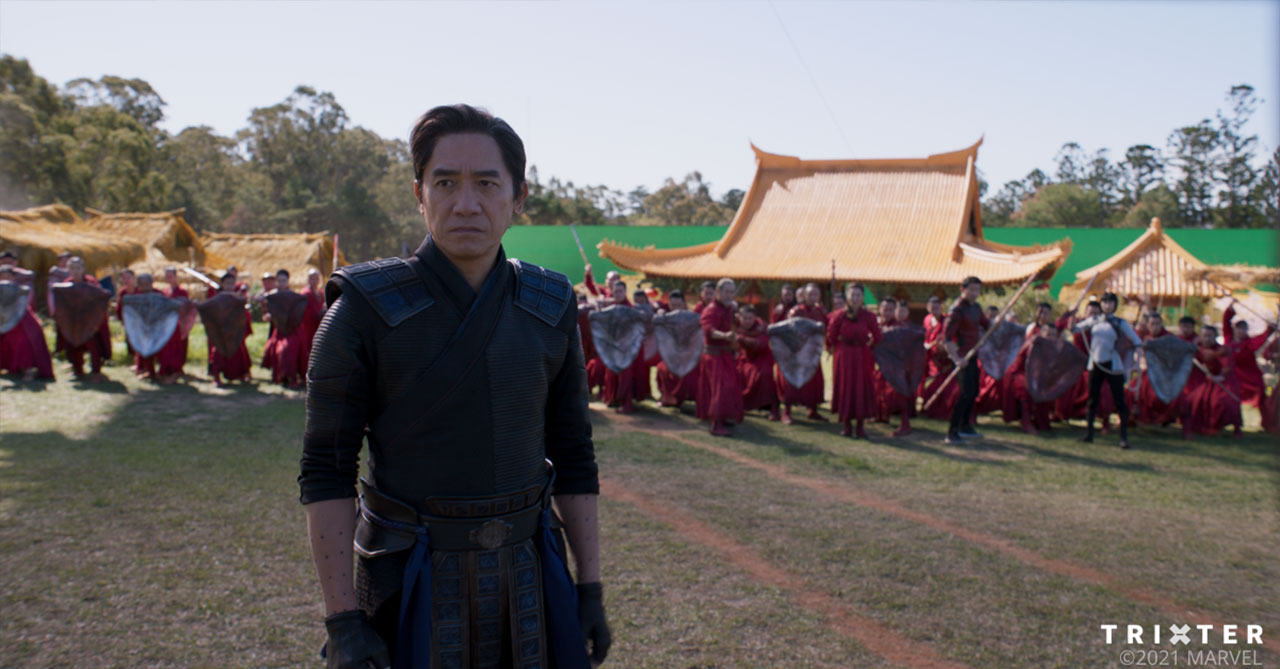
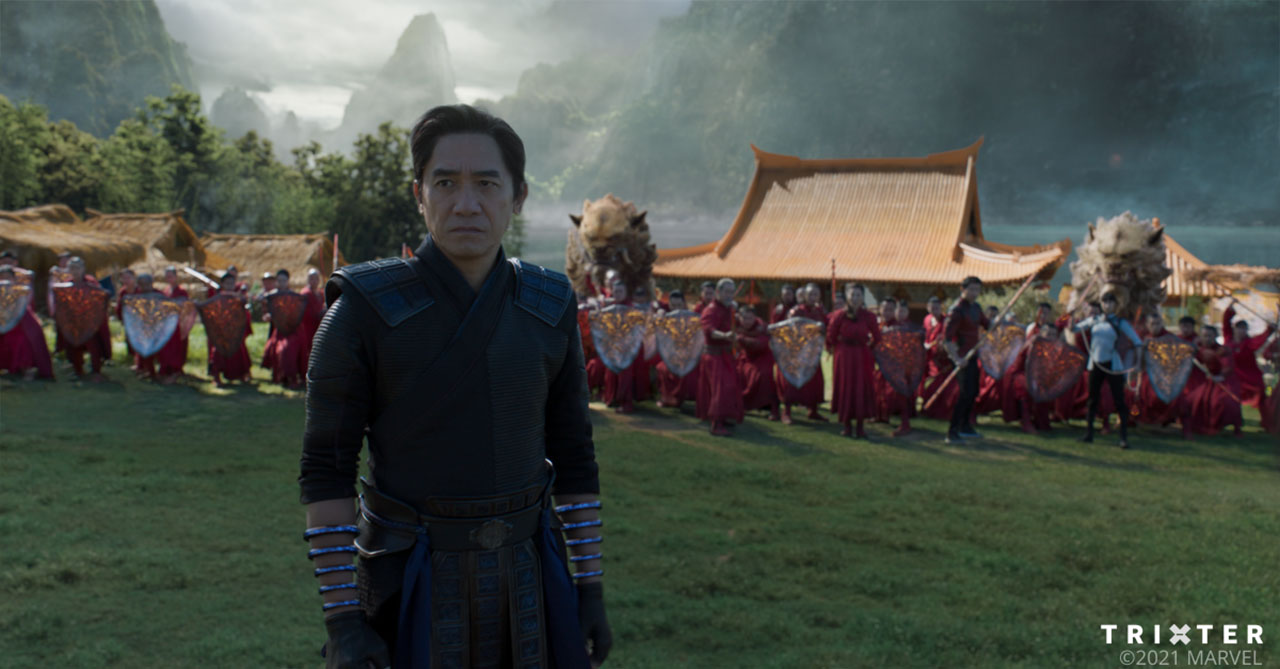
What were their expectations and approach about the visual effects?
As usual, the main goal was realism. However, considering that parts of this movie are playing in a magical world that should still look and feel magical, it was also about creating a believable image of the fantastic. We needed to find the right balance between showing the audience something otherworldly beautiful while maintaining a sense of grounded reality. I mean, our main character is a furry blob with a considerable amount of wings and legs. So definitely, there was something that we needed to work hard on to sell it.
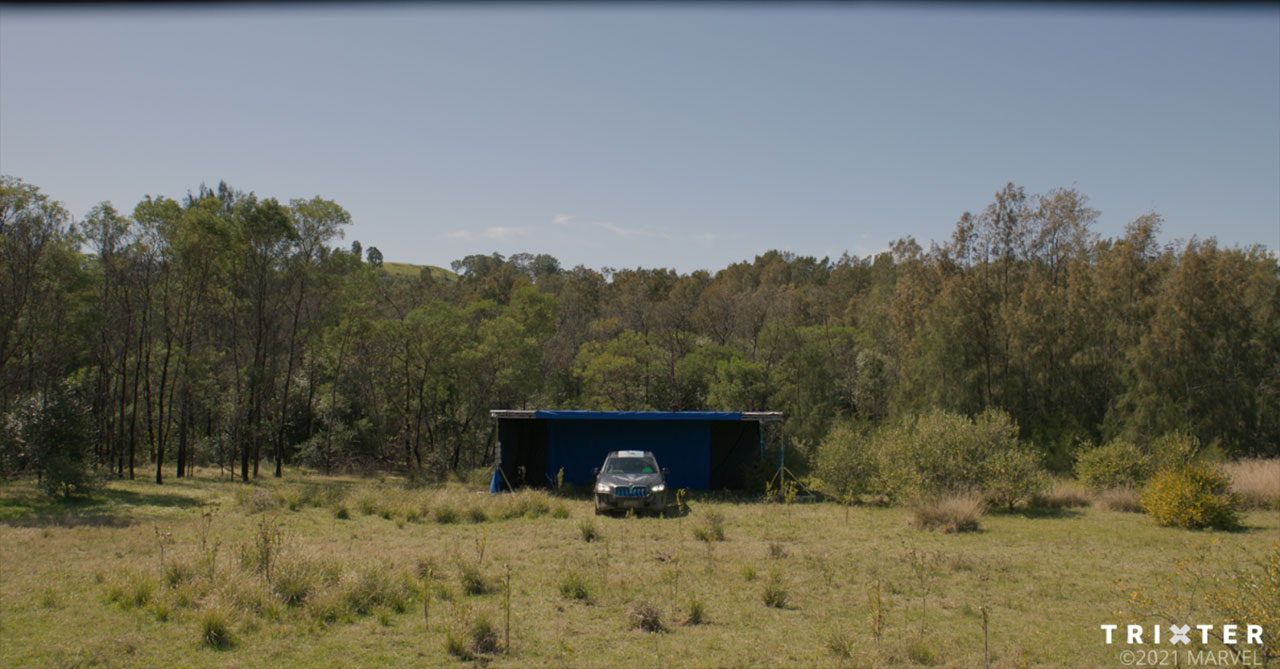
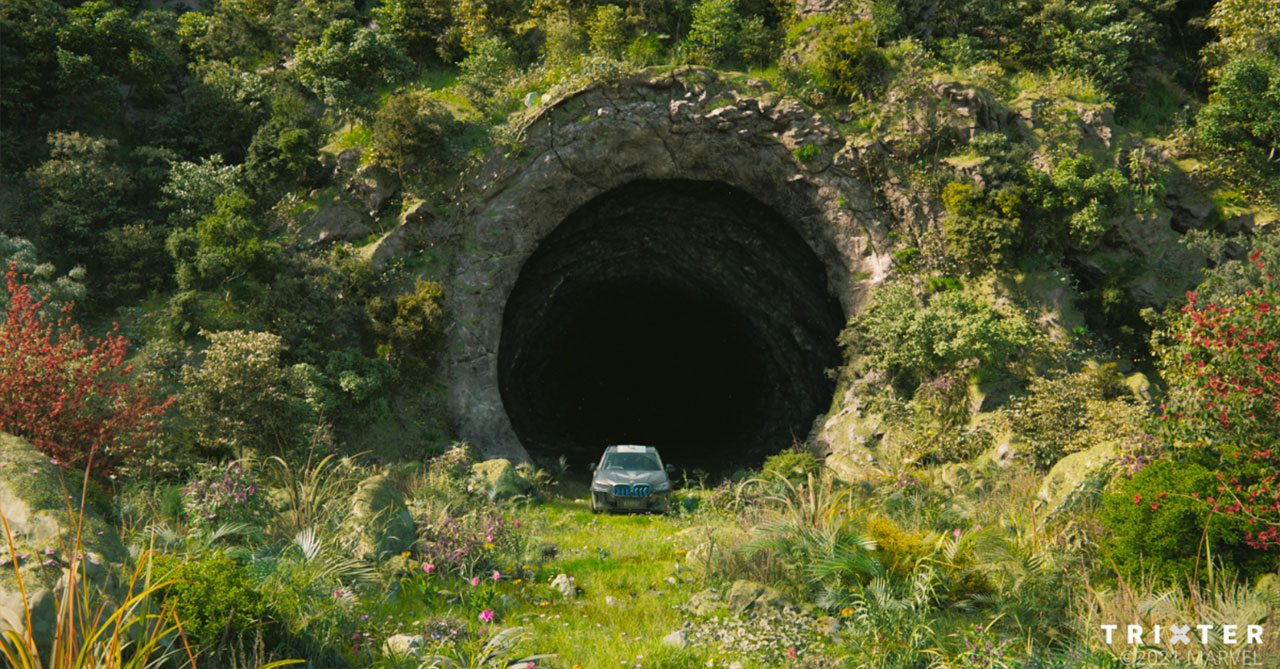
How did you organize the work with your VFX Producer?
I teamed up again with VFX Producer Sarah Fernandez. She was responsible for structuring the work of the Production department, including our incredible Coordination Team, planning and scheduling the workload together with Production Manager Agustina Arcondo and oversaw all the financial and resource-related aspects of the show. I was responsible for the Artistic Direction of the project, defined the approaches for each sequence together with CG Supervisor Chris Nickel and Compositing Supervisor Ernest Dios, our Department Head of’s and Supervisors and their Leads. I also reviewed all the material that the artists created during the day.
We also did a lot of bidding and re-bidding together and Sarah’s creative thoughts were always welcome during Reviews. Nothing beats a fresh eye when you have the feeling that you hit a dead end on a creative challenge. Since we worked together a lot in the past years, the collaboration came very naturally, which is great when it gets stressful.
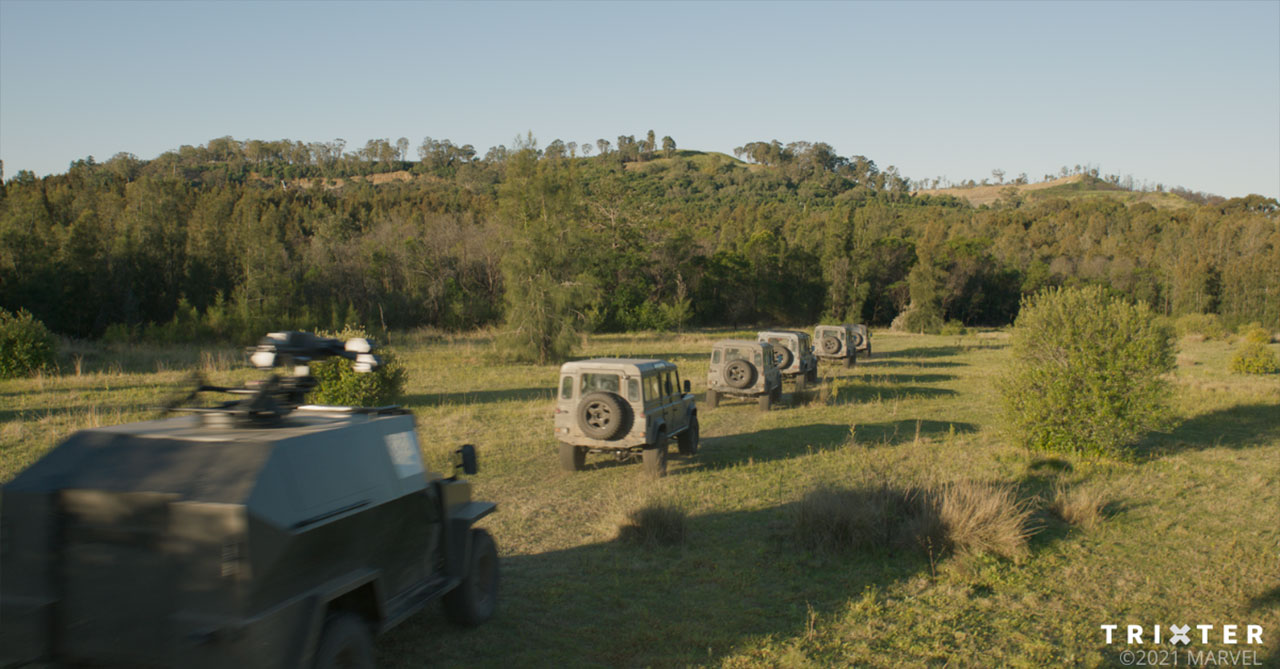
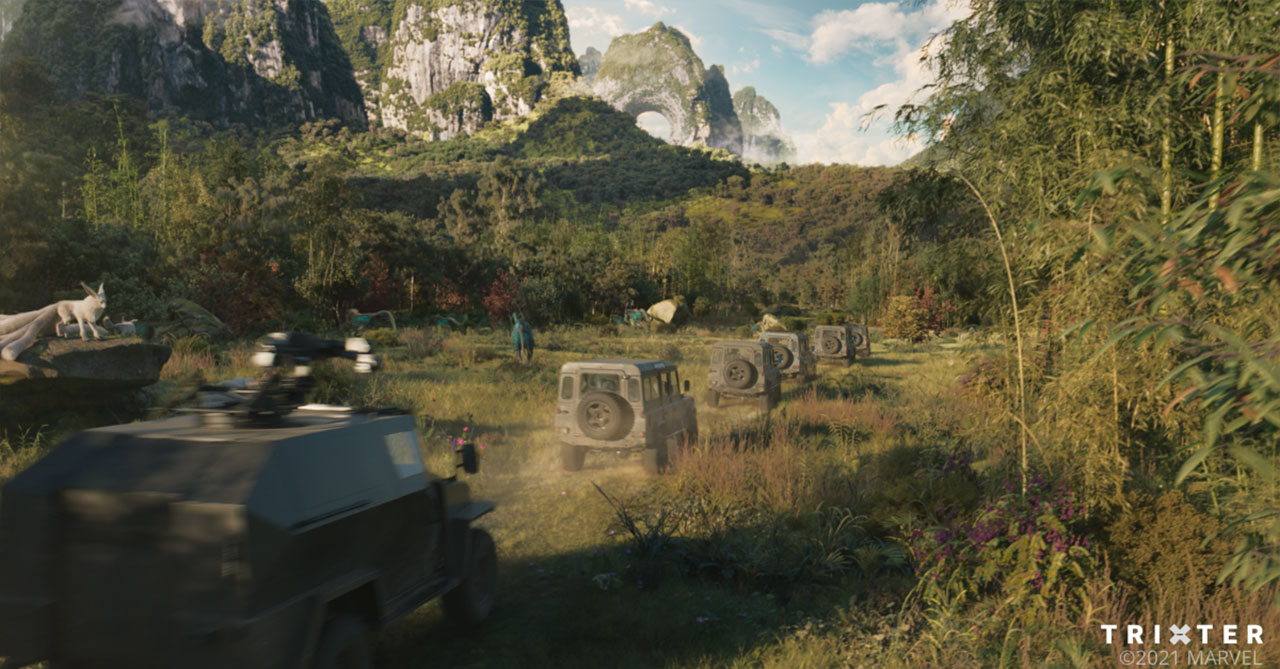
What are the sequences made by Trixter?
On this show, we did quite a lot of different sequences. We started with the Abomination Fight, we did all the Morris work for Scanline VFX Bamboo Forest Escape and delivered most of the Prison Cave shots. We also supported Digital Domain’s escape from the prison with Morris, we did the entire Ancestral Road environment, significant parts of the group arriving to the Ta Lo village, some of the Ta Lo battle shots and a good chunk of the approach of the demons to Talo. Here we did the reverse angle without the demons, while Weta Digital was doing the one with them.
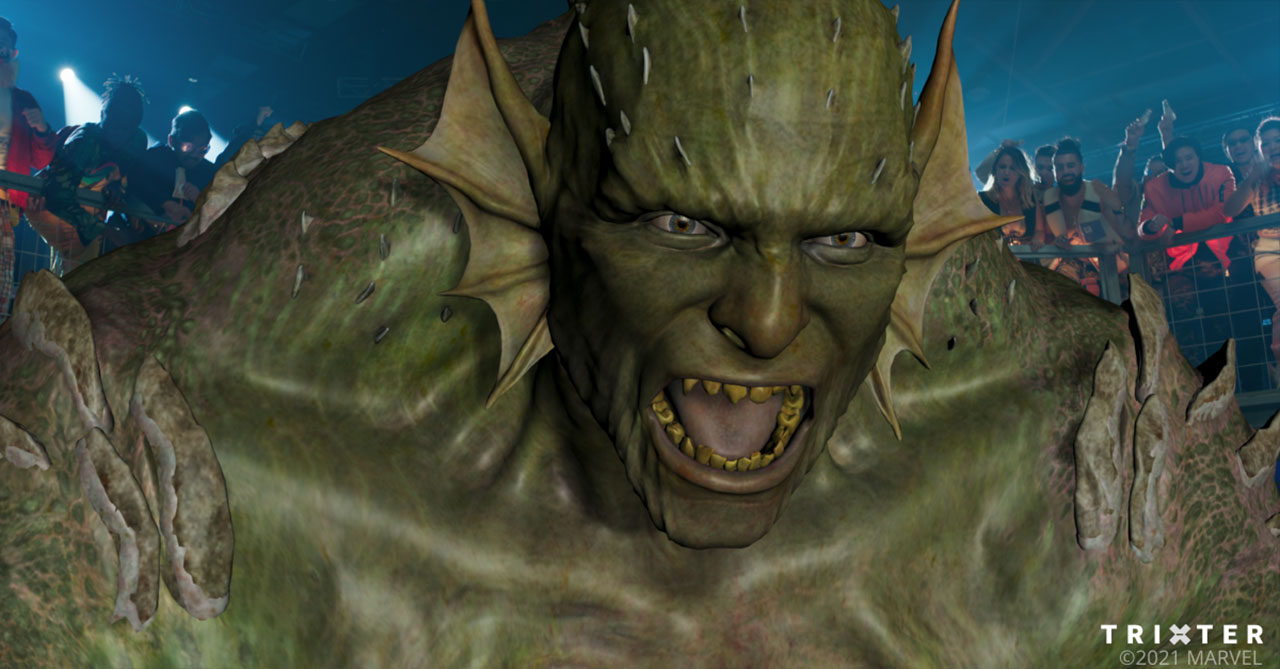
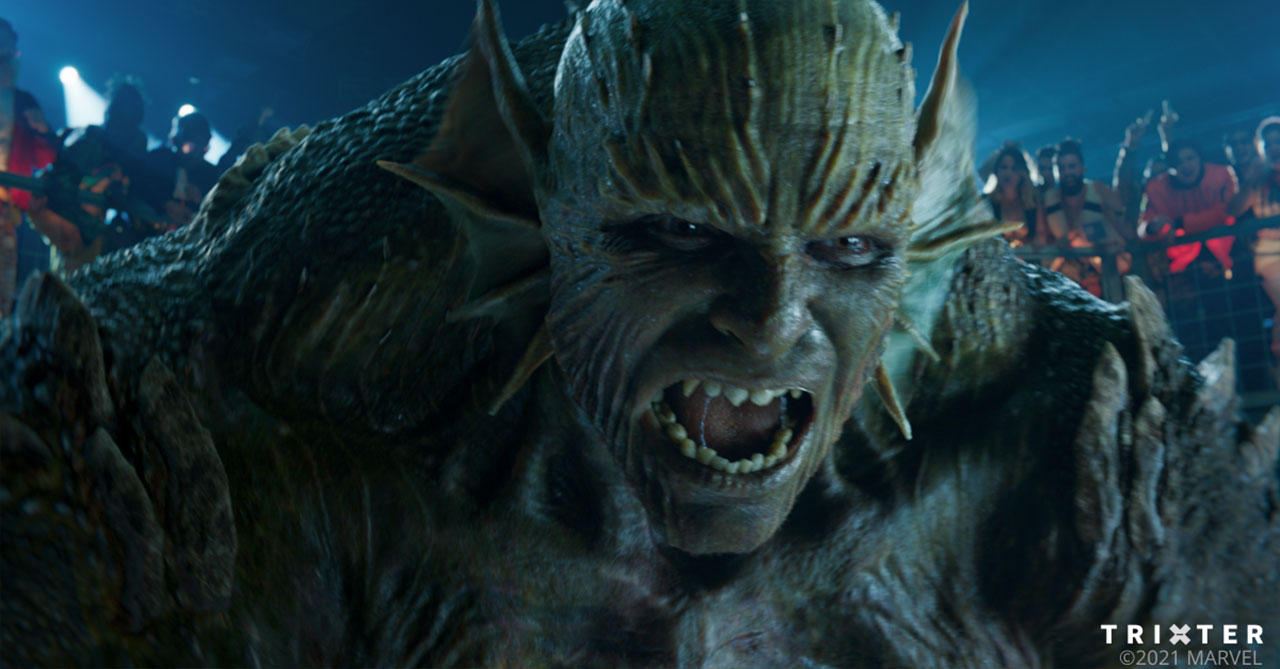
Can you explain in detail about the creation of Morris?
Morris was an extraordinary creature to develop. He has several features that are relatively uncommon: no face, four wings, six legs. Also, he was supposed to look cute and cuddly. Our starting point was a few concepts from Marvel’s Art department alongside a briefing from Chris Townsend. The idea of Morris originates in Chinese Mythology – a creature named Hundun, a representation of primordial chaos, as far as I understand – and as such, there were quite some exciting and odd proposals for how Morris could look. Naturally, we went for the cutest representation. The goal was to achieve something that resembled a Wombat: fluffy, fun to watch and a bit clumsy with the job to be the comic relief of the hero’s party. The first decision was to either go for two pairs of front legs or two pairs of back legs. Both had their benefits and ultimately would have altered the perception of the creature as well as its biomechanics. Equally fundamental was if we should go for a Digitigrade Creature, so a creature walking on their toes like a cat or a dog, or if we should go for a Plantigrade, walking on the entire foot, like a bear or a Wombat. Eventually, Marvel preferred the configuration of two pairs of back legs with a Plantigrade Anatomy, as usually their movements are droller. It just worked better with what Morris was supposed to look like. To evaluate all of this, we presented 3D sculpts directly from ZBrush. So when our Head of Assets, Farhad Yusufi and his team went further into asset development, they already had a precise 3D reference which Chris and the Studio already knew from all sides.
With his rather chubby appearance, having six legs and four wings doesn’t leave much space when all of Morris’s limbs start to move. Consequently, we couldn’t confidently move forward with the development of the asset if we didn’t see it in motion.
Going for 3D Concepts paid off here as well. Head of Rigging Ruth Wiegand and her team could use a simplified version of the concept mesh to start the rigging process right away without further delays.
And as we needed to find out where our joints need to be, how thick and long the legs can be, and how he moves to ensure our final model can cover these needs, we passed this on right away to our Animation department, while the asset department started preparing the topology in parallel. With the super early version of Morris Animation Supervisor Simone Kraus-Townsend and her Leads Patrick Kern and Nicola Russi could already do first motion tests to give feedback to Modelling. At the same time, they already got to know the creature. After we established our body mesh, Lead Grooming Artist Mikkel Arildsen and his team created the fur and started the feather development. The fur was supposed to be very fluffy and soft. The feathers were inspired by a Canada Brown Goose, enriched with iridescent feathers. At the same time, our Lighting and Lookdev department, under the supervision of Julius Ihle, went into shader development for all aspects of Morris.
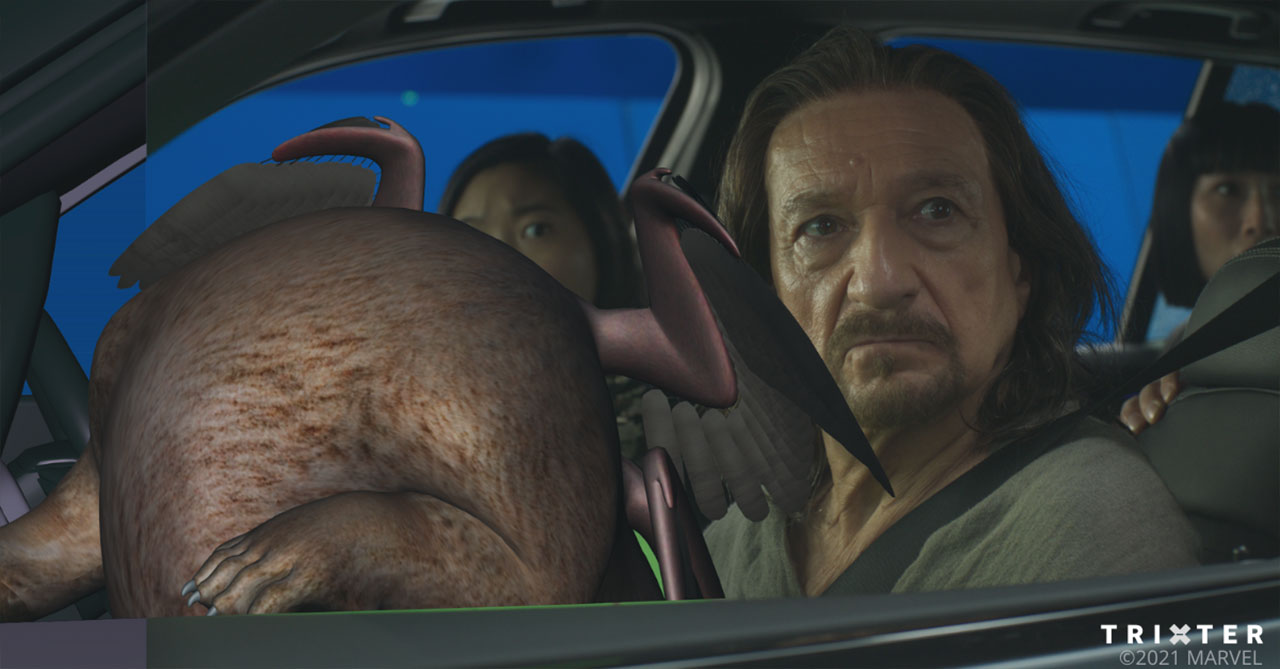
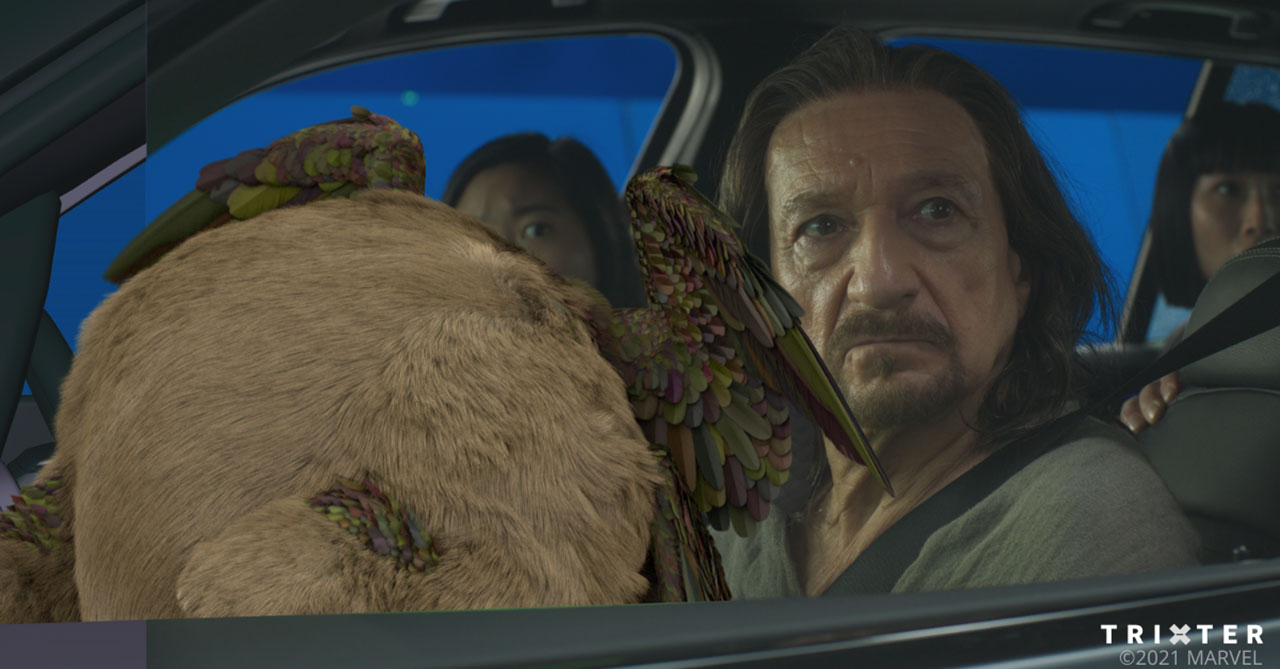
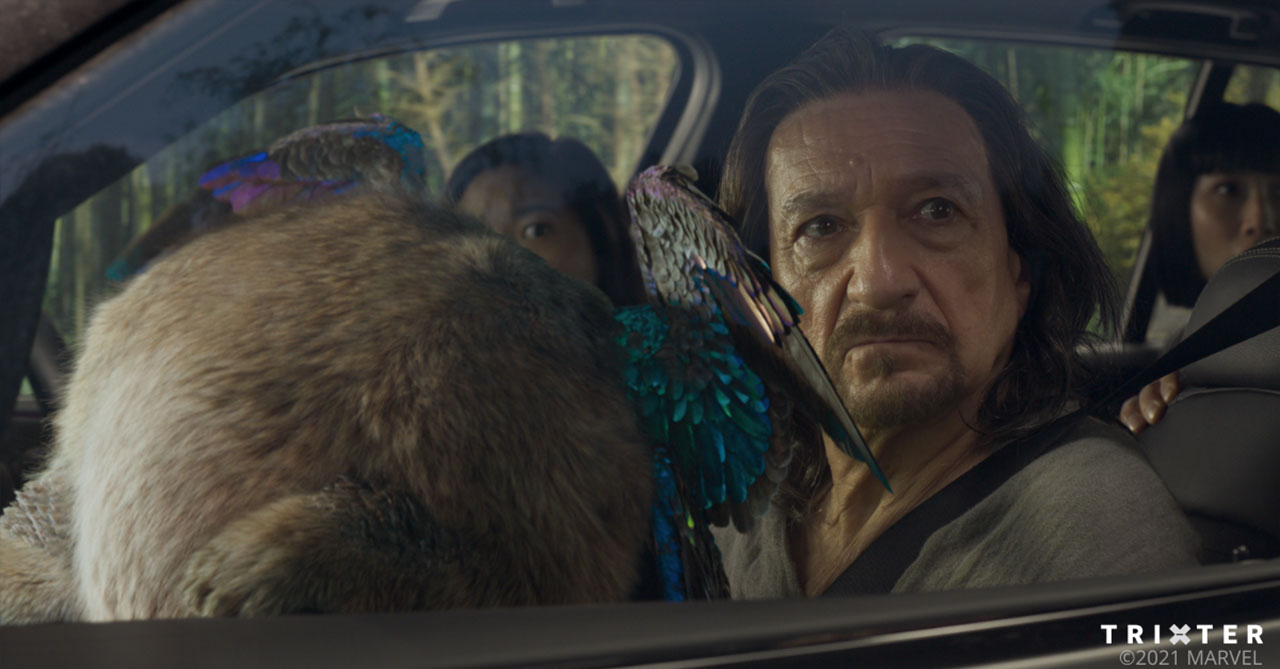
How did you handle his rigging and animation?
For rigging, as for all departments, having a six-legged creature was outside of the comfort zone, especially in combination with the short and round body shape. Our close relationship between animation and rigging helped a lot to resolve any issues coming from Morris’s unique anatomy. And within a few rounds between both departments, we closed into something that everybody was confident to work with. Another part where we invested quite some custom rigging time was for the feather setup. We produced a rig for the primary, secondary, teritial and alula feathers suitable for keyframe animation, which eventually drove the feather sim. The scapula feathers had a rig that automatically avoided collision with the wing geometry and the keyframed feather groups, which was incredibly useful later on while doing the creature sim. Besides helping to define the final proportions of Morris, Animation began with gathering all kinds of references for movement patterns, looking at the biomechanics of plantigrades and see what kind of animal could serve as a reference for this fantastic creature. These references mainly were Wombats and various bears, but also dogs. The intention was to make Morris look likable and relatable. Then we started to translate these quadruped references to the six-legged creature and see where to fit this extra piece of legs while Morris moves. Based on this material, we created quite an assortment of test animations to test our findings and provide the creature FX department with material to evaluate their setups. Lots of these test animations found their way into the final movie in some form after a lot of shot contextual finessing.
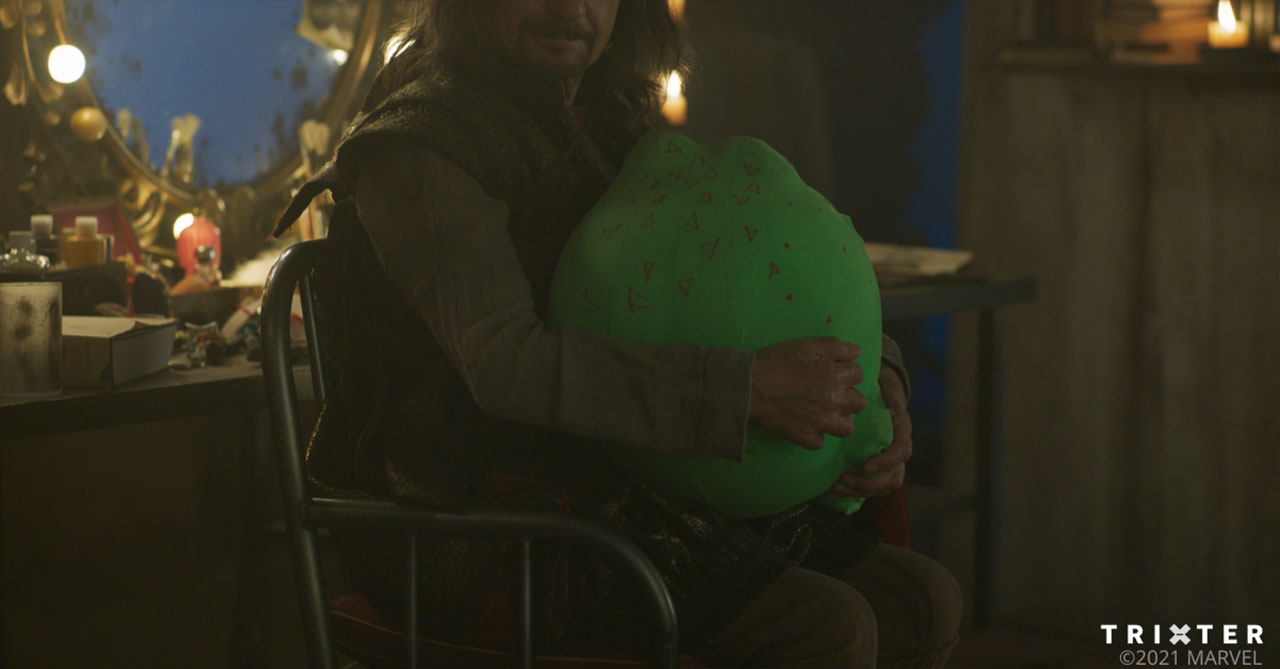
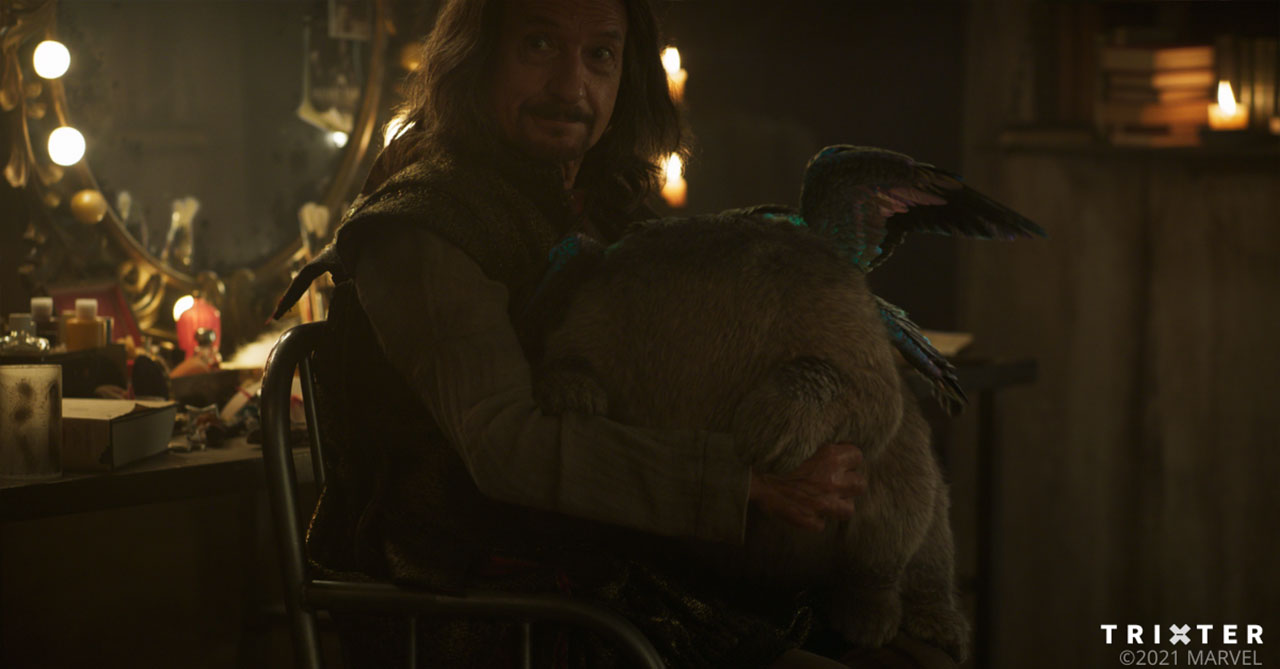
Can you tell us more about his simulation aspects?
Simulation played a crucial role in the creation of Morris. His fat layer and the amount of interaction required a robust and flexible skin sliding and muscle simulation setup. Based on our very positive experiences with Goose the cat, we chose Ziva again for this purpose. For the fur simulation of Morris CFX Leads Eduardo Dioses and Nico Kahmann and their team went for Yeti and Houdini, altering between them based on shot-specific requirements and Houdini for the feather simulation. The feather simulation turned out to be incredibly demanding and called for custom tools to help us with the de-intersection.
What were Morris specific challenges?
Definitely the wings and feathers. Getting all the intersections out there was a big thing for Animation and Creature FX. We got an excellent initial result with our technology, but there was such an amount of feathers with a potential to intersect that there was still a lot of manual work required to solve this.
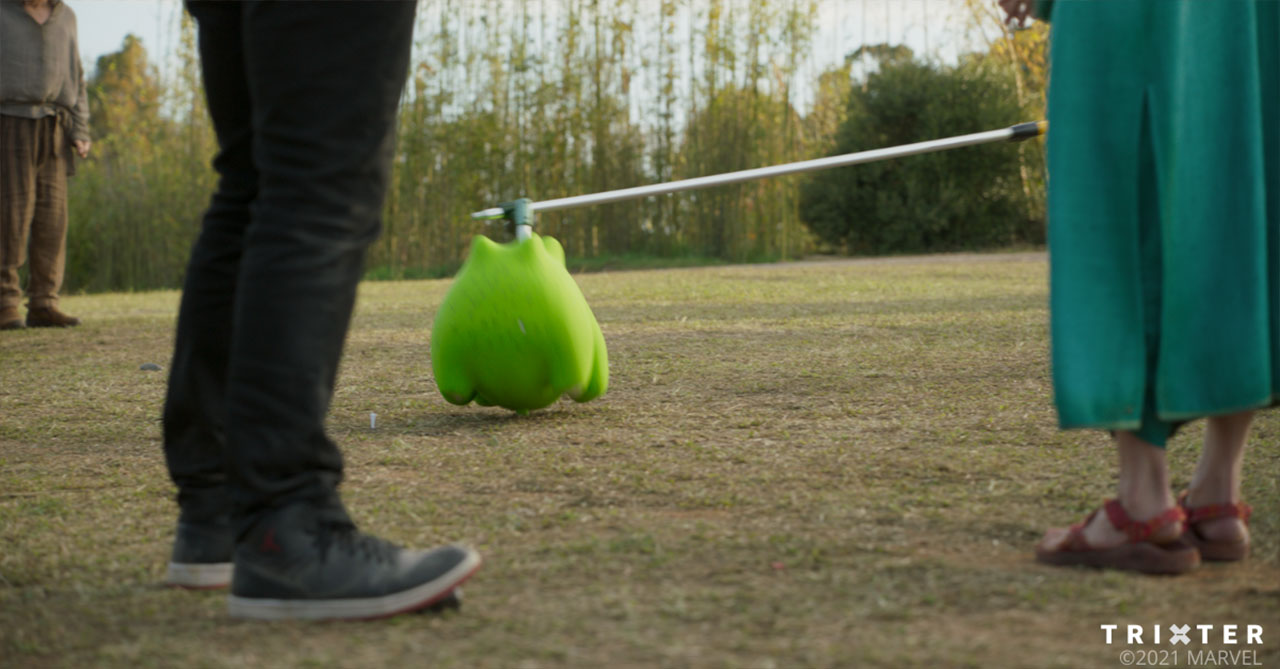
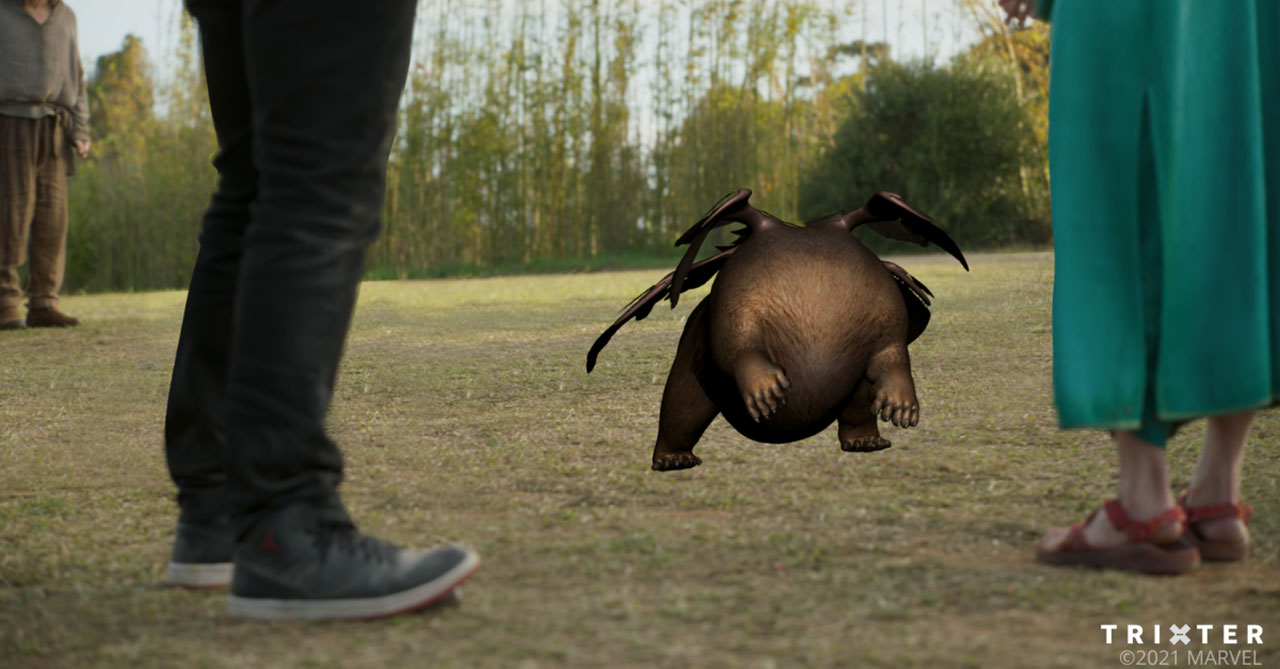
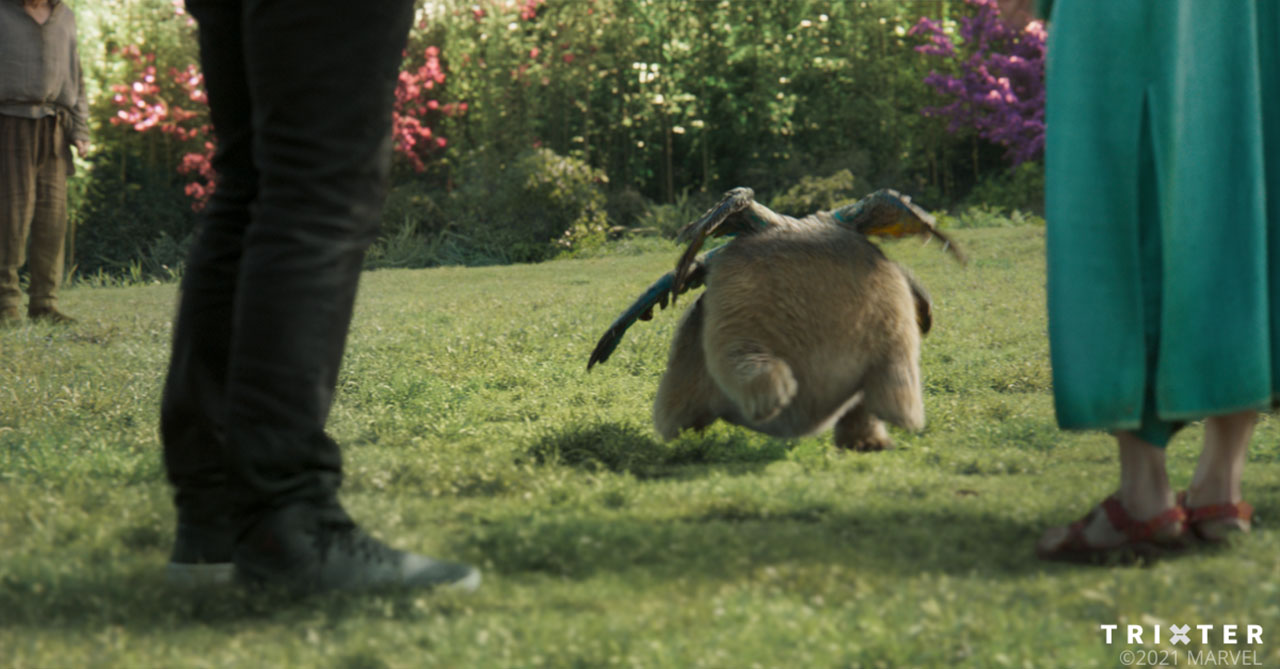
What can you tell us about the creation of Abomination?
We were incredibly thrilled when we first discussed re-creating Abomination for Shang-Chi. We saw this character the last time in 2008 and getting the chance to show our take on it was an exciting outlook. We started with Concept Art from Marvel’s Art Department, the original Asset from 2008 and references of the most recent developments on the Hulk. First of all, we started detailing the information we received from the provided Concept Art: we looked for references to what each part of Abomination could look like. For example, what materials should the horn parts have, how will the plates behave under the skin, what about his fins.
Additionally, we started looking into how much of Tim Roth we could get into Abomination. We played around with different blending levels between a 3D representation of Tim Roth’s face and the original Abomination until we found something that worked. The Associate VFX Supervisor of the first phase of the show and huge Marvel fan Chris Smallfield was significantly involved in this part of the process. I think it was a dream come true for him. We then sculpted a model around this framework and based on Marvel’s feedback, we refined proportions and large-scale shapes until everybody was happy with the anatomy. We then used all of our reference material to add displacement and bump details and worked on the textures alongside. At the same time, our creature simulation team investigated the best setup for the skin sliding over the subdermal plates, which we see around the biceps and calf areas.
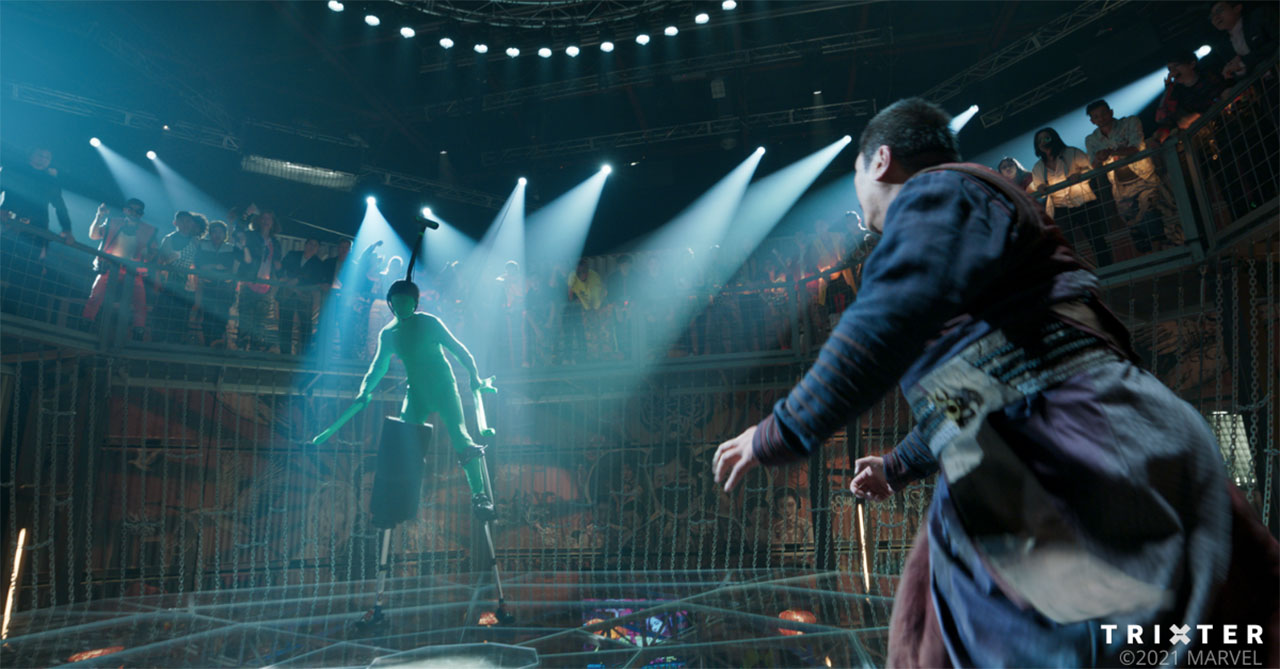
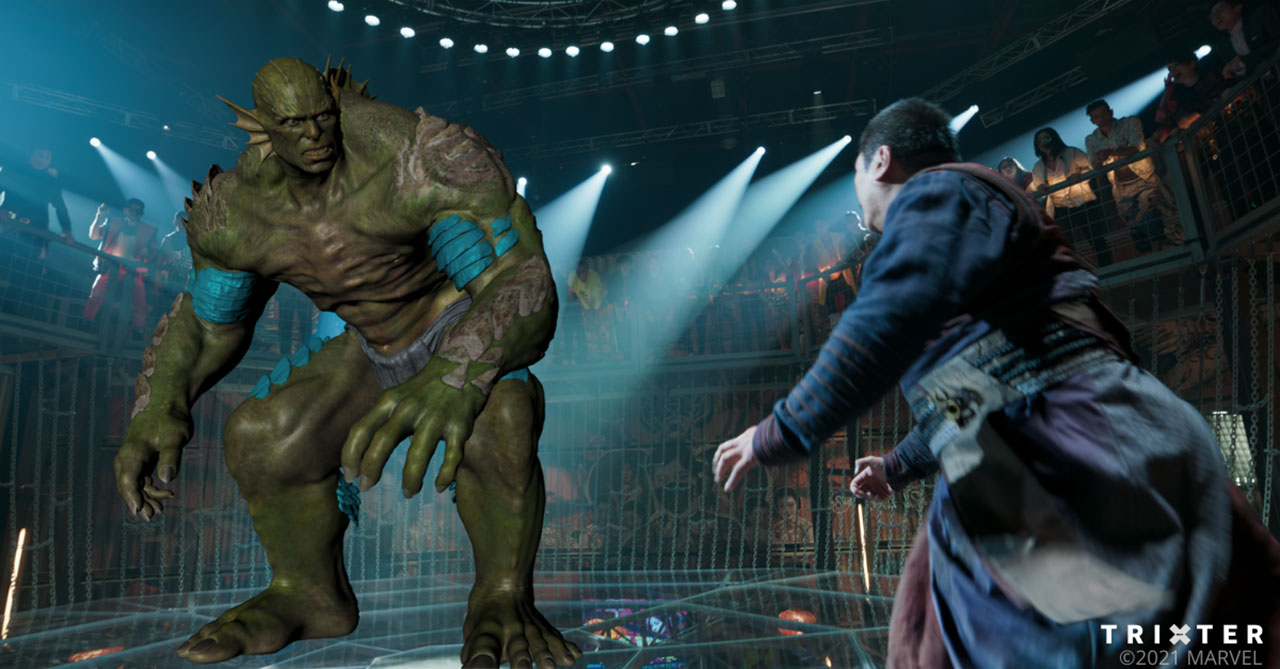
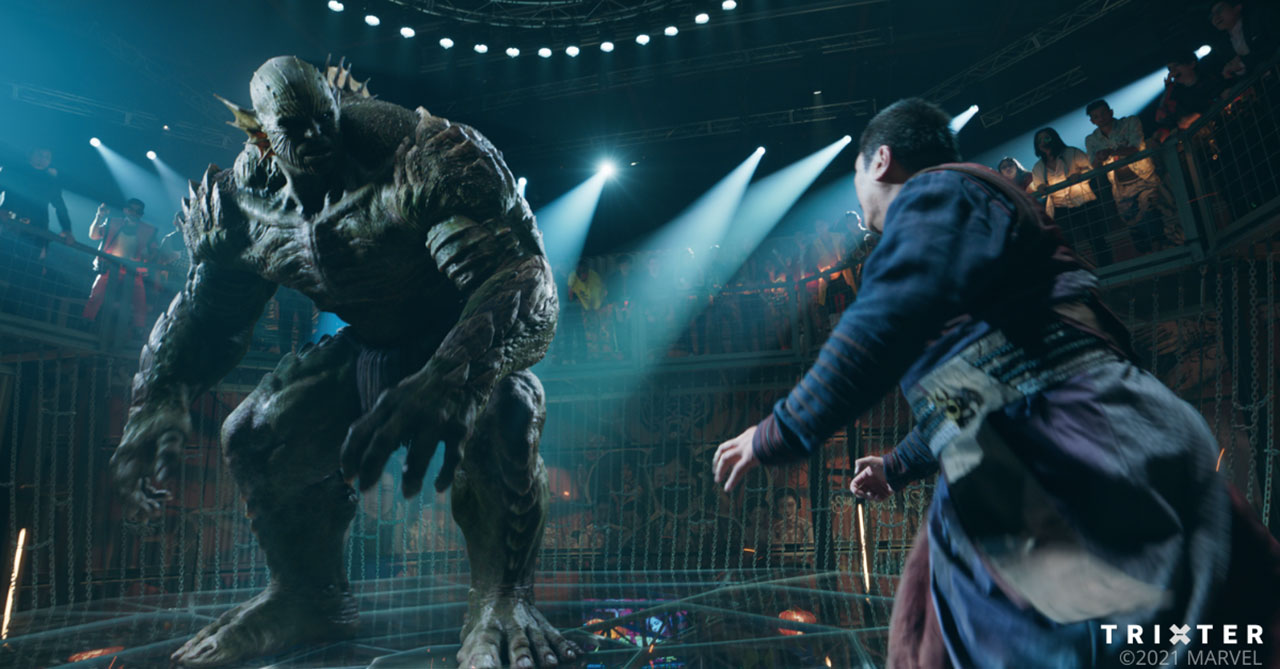
Can you explain in detail about the creation of the Ancestral Road environment?
The Ancestral Road environment is the area leading towards the TL village. We created the environment from scratch in Clarisse, Speed Tree, Houdini and Katana / Arnold. The briefing was to produce a magical, lush, rich, yet naturalistic environment inspired by Asian landscapes. We went for an all CG environment, which gave us all the control we needed to adjust lighting and mood however required. Still, we kept the car and the passengers from the original material and also the camera moves for most of the time. We received and collected many references for the flora that we wanted to show in the sequence and started to reproduce them in Speed Tree. Parts of it were also coming from RSP’s TL environment because we needed to visually connect both areas of this realm and use the same language.
The first thing we needed To start our environment work, the first step was that Matchmove / Layout Lead Aaron Stewart and his team created a unified layout of all the shots. Our goal was to work with one continuous scene that required only minor per-shot adjustments. After we had established that, Lead Environment Artist Tom Hiebler and his team started drafting our environment in Clarisse and presented direct renders to Marvel to see if we went in the right direction. Once we established the general direction, we went to refinements. There is an incredible amount of detail in a naturalistic environment to be taken into account: how do we establish ecological niches, so where are the tall trees, where will shrubs and smaller plants dominate, what is happening under big rocks, how does the forest edge transition naturalistically towards meadows and low growing plants. All of this should look like it was an untouched environment, naturalistic in its beauty – it should still have a convenient path for our heroes to travel along, of course, but also that one should not look artificial.
From a technical point of view, the final output is ‘mixed media’ if one wants to call it like this. The far BG environment was directly rendered in Clarisse and sent to comp. All mid- and foreground environment parts come from Katana / Arnold – to get the point cloud from Clarisse to Katana and have unified shader definitions in both packages, we wrote some custom exporters. The parts of the point cloud that required interaction with cars or creatures made a detour through Houdini, where FX Supervisor Martin Lapp and his team added this extra piece of realism.
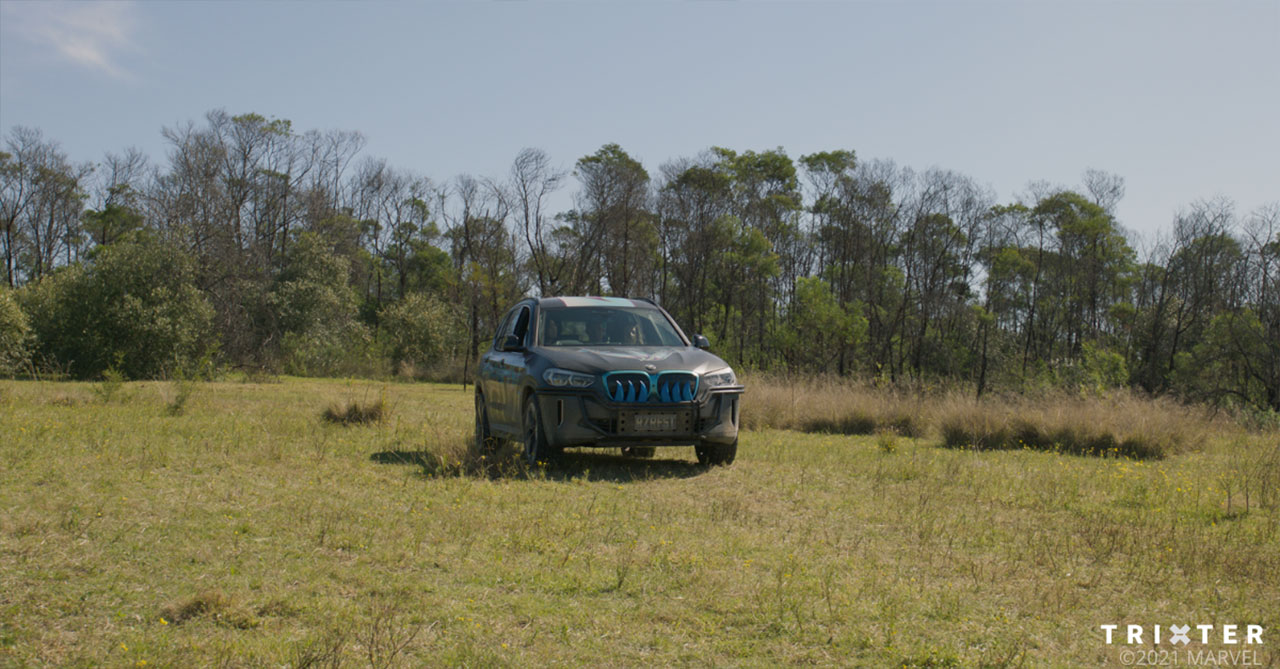
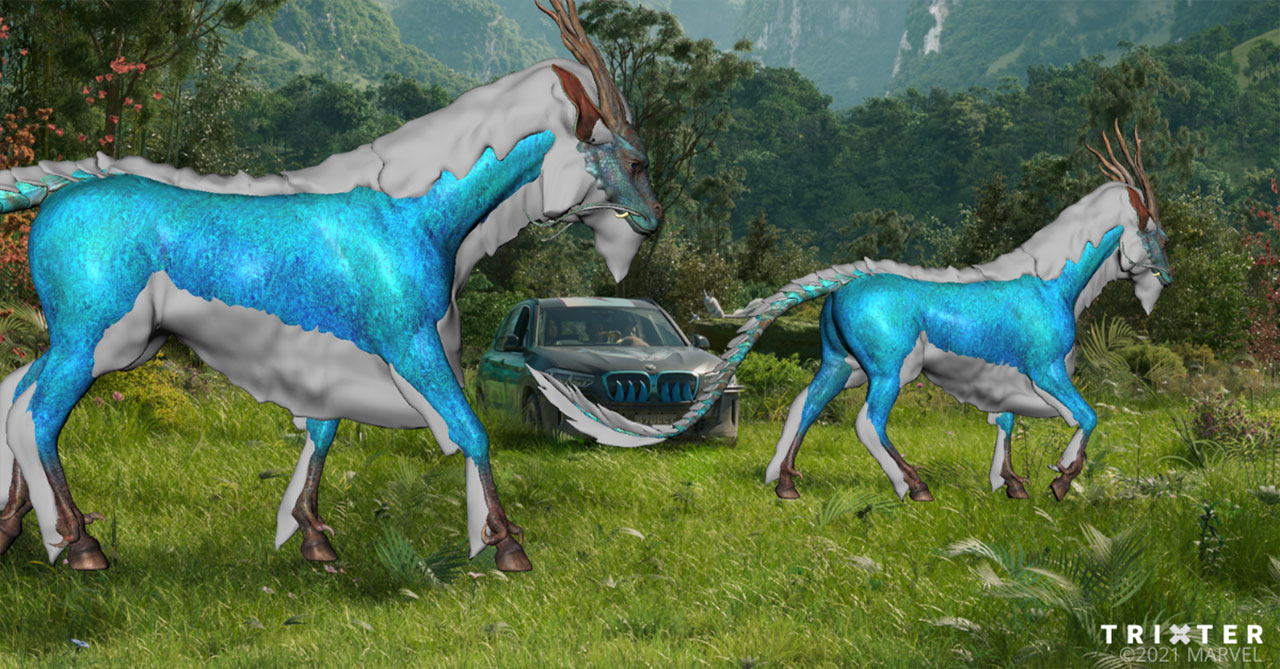
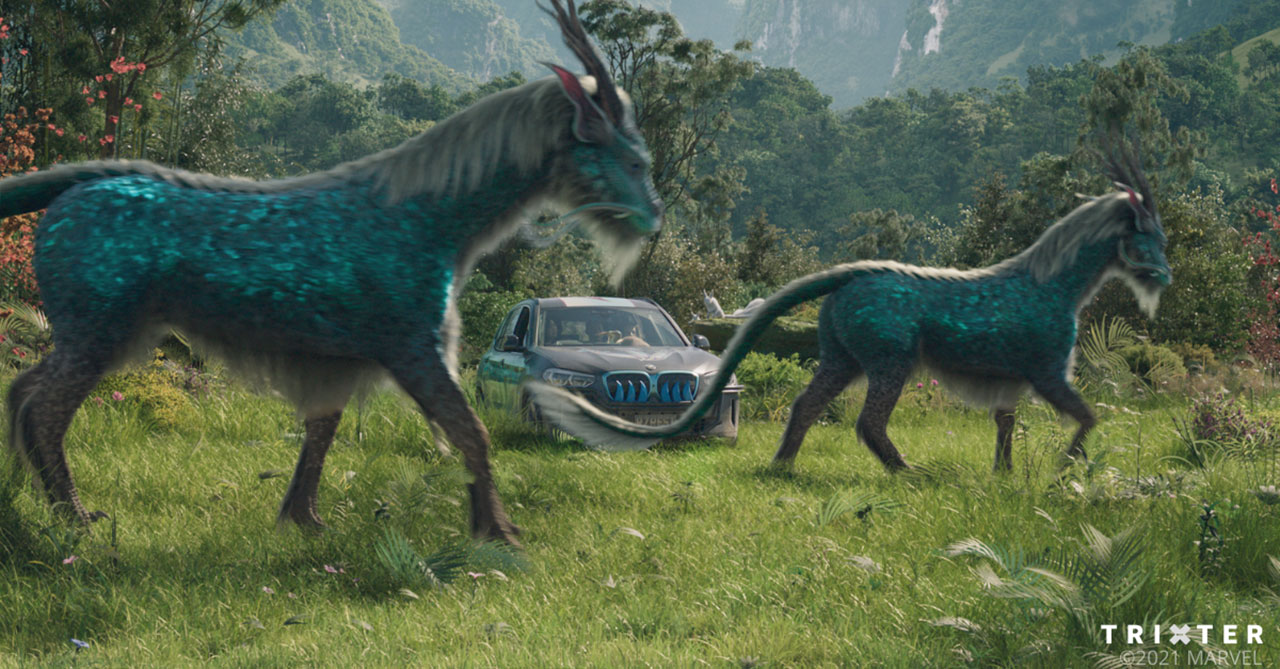
What about the creation of the creatures such as the Nine-Tailed Fox and the Qilin?
Both creatures come again from Chinese Mythology. The Nine-Tailed Fox was pretty straightforward: It is a white Fox with a bit more slender proportions and, well, nine tails. But the creature was immediately liked by everyone – especially the cubs that we also did. The Qilin was a different beast and it was tough to get a grip on it. It is a horse with iridescent scales, a flamboyant mane and the face of a wise old guy – and its base color in the concept was cyan and teal. This Dragon horse was a creature where everybody’s brain immediately was protesting in disbelief. I think that the more fantastic the beast is that you want to create virtually, the better all aspects have to work together. There are odd animals on our Earth, but they work because all details of them are so convincing that our protesting minds don’t have any arguments left to prove their point. That is pretty much what we tried to achieve with the Qilin. We went through several iterations, tried various color combinations and biases between them to find out where it still looked magical but was grounded enough in reality to be believable. It was fascinating to see how little it took to break the creature: too much saturation on the scales, the mane a bit too puffed up, some weird behavior on the body fur – and immediately it felt off.
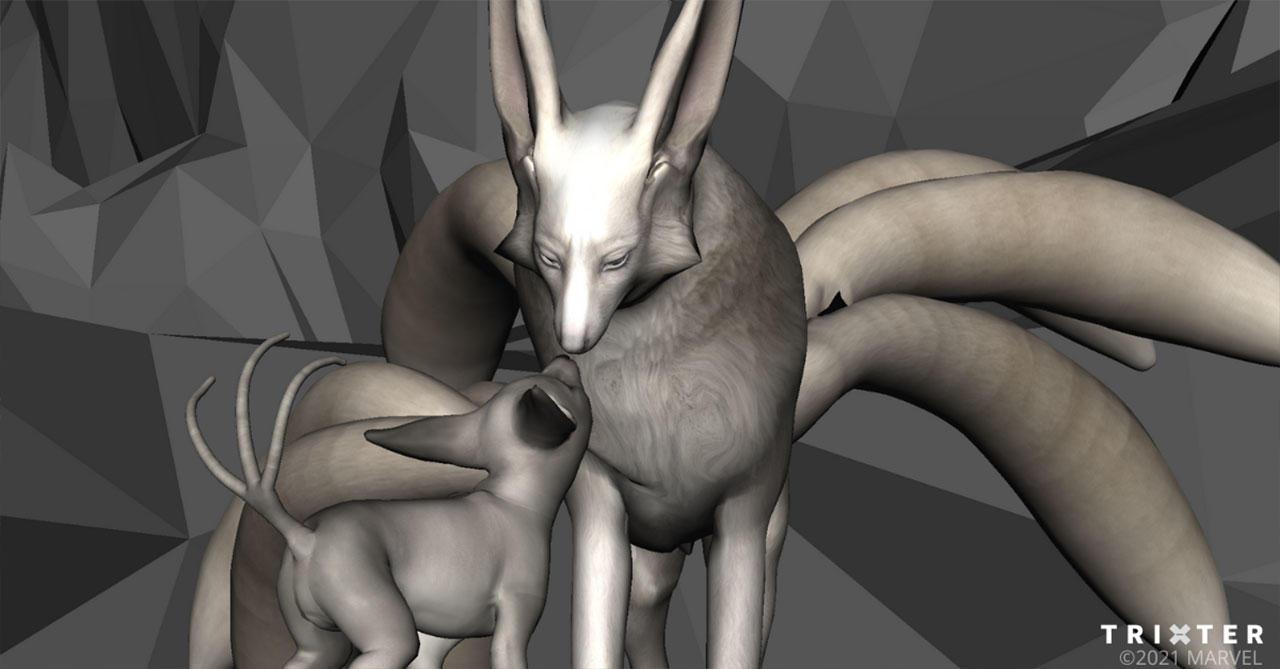
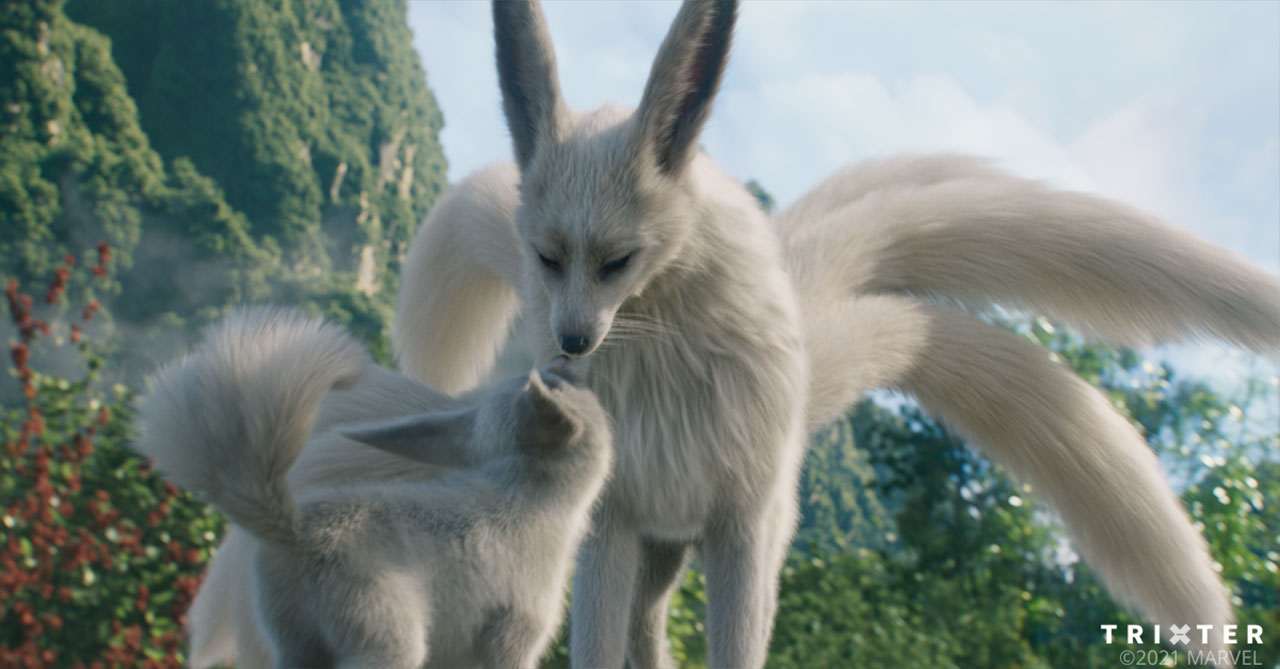
How did you manage their simulations?
The Foxes were again pretty straightforward. We gave them fur collisions and a slight bit of wind movement and everybody was happy. Of course, it sounds much simpler than it was, but we didn’t require too many iterations. However, the Qilins are covered in hundreds of scales, and de-intersecting these was as complex a task as Morris’s feathers. Additionally, the mane movement required some testing to find the right balance between softness and dynamic movement.
How did you work with the other studios when they shared the Ta Lo environment and the Foo Dogs?
This was one of the other big challenges of the show. Due to the intertwined nature of the sequences, everybody was sharing assets and shots with other vendors. Everybody uses their own tools and moves things differently through their respective pipelines, which required quite some alignment and discussions until everybody was on the same page. However, the great thing about our industry is that everybody is super helpful and there was never a point when a question was unanswered or we were left in the dark. We had really nice and productive talks with Rising Sun Pictures, Weta and Scanline and it felt like a collaborative effort each time we needed to sort a problem out. Also, it was great to see their work so early in a show. It is very inspiring and you somehow enter a friendly competition, where you want to produce shots as beautiful as theirs. I really liked that aspect of the shot sharing because it widens your focus.
The Ta Lo environment was a beast. We received a point cloud, a massive assortment of assets and speed-tree files and renders to re-create 1:1 what RSP was doing. They did an incredible job with this and kept us updated at all times.
The Foo Dogs were coming from Weta – there we received the Mesh, some facial shapes and a full groom export. However, for simulation purposes, we needed to redo the groom ourselves, as our systems were not compatible.
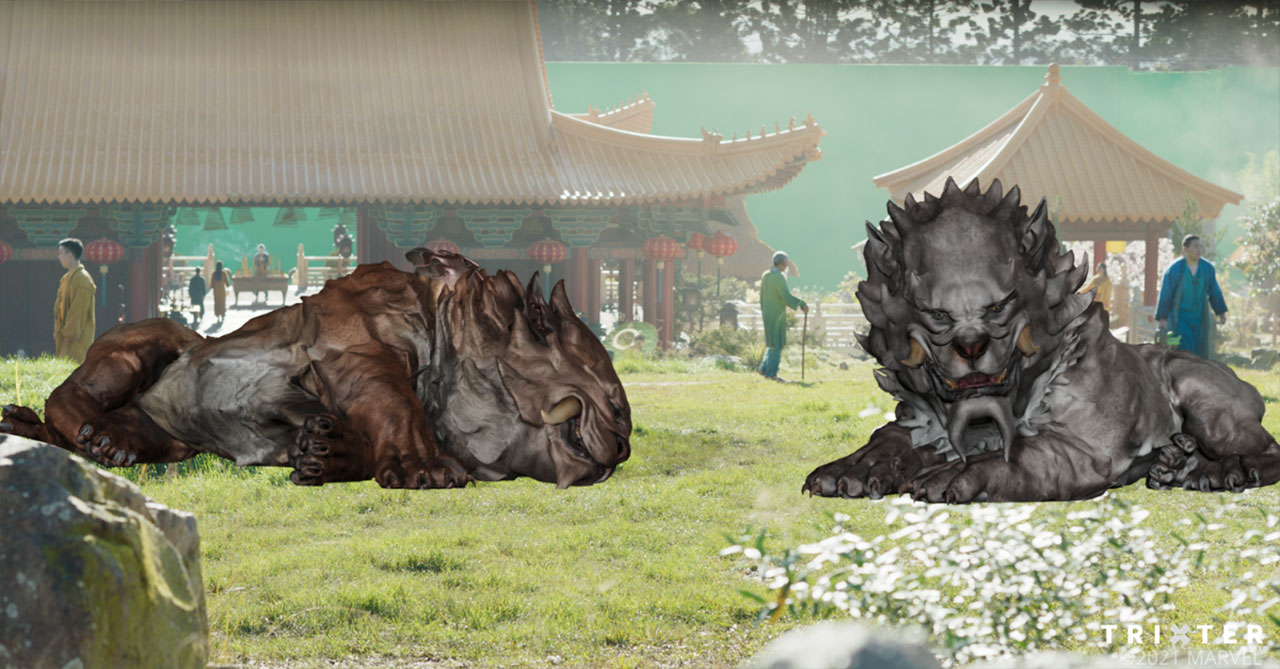
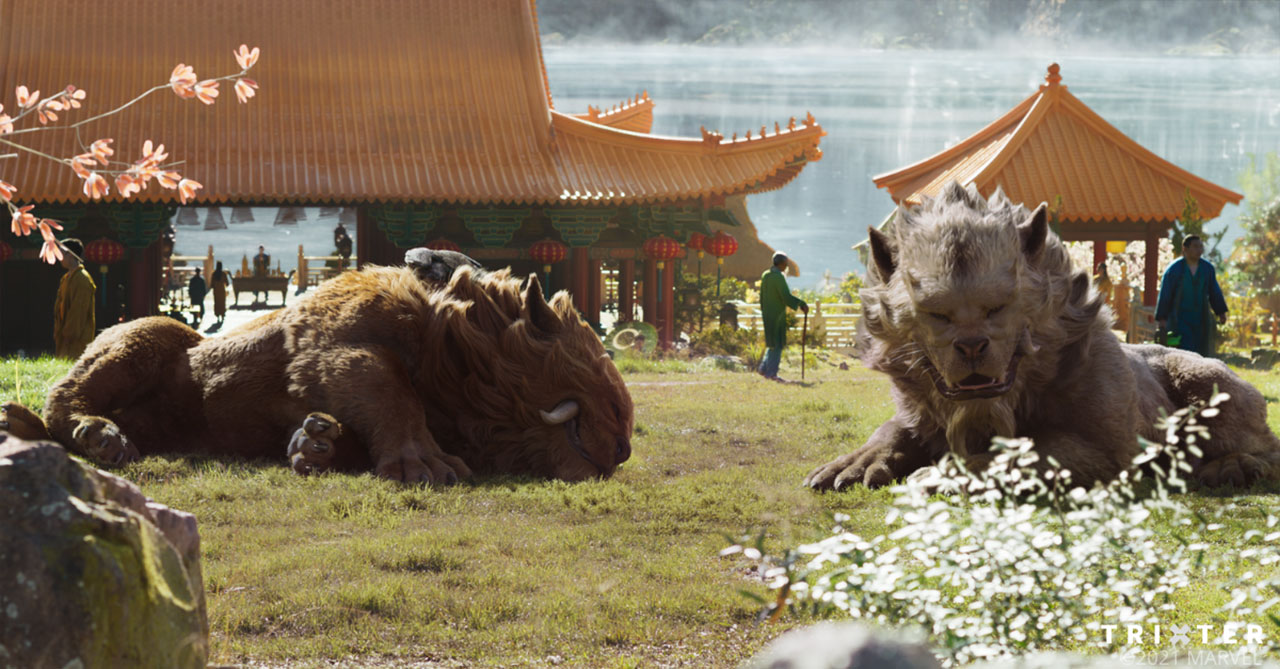
Can you tell us more about your work (with Scanline VFX) on Bamboo Forest sequence?
Among all shared sequences, I think this one had a special status. It was actually where the bulk of our Morris shots were happening, and as far as I know, this was also one of Scanlines hero sequences.
We agreed at the very beginning that Scanline would take care of the 3D setup of the scene, providing cameras and layout scenes, while we would use this to bring Morris into the shots. We also took care of all comp aspects related to Morris. Whoever was done earlier sent the material to the respective others who finalized the shot with their elements. Our lighting Leads Miguel Lleras and comp lead Matthias Eckhard in tag team had an iron grip on the sequence and I think it looks great.
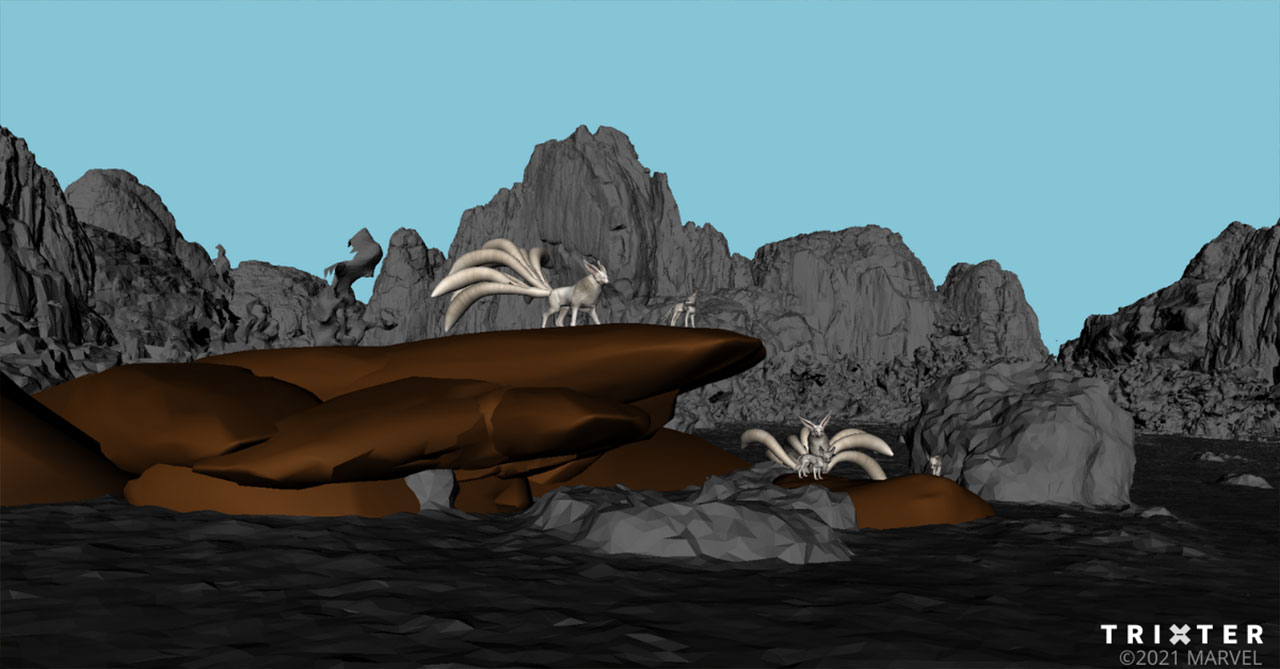
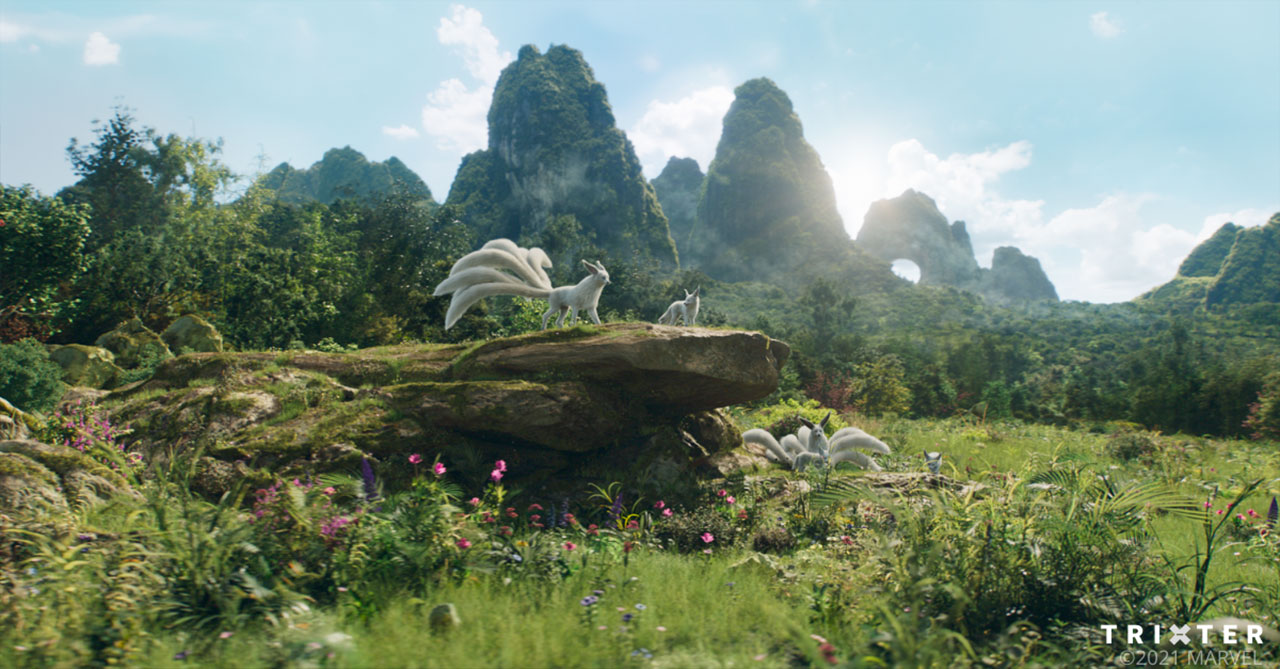
Which sequence or shot was the most challenging?
Considering all aspects, I feel like the arrival at Ta Lo and the Ta Lo battle were among the hardest ones to get to a final result. The combination of harsh Australian sunlight during the shoot, the 360° replacement of the environment and the Foo Dogs combined with tons of people, glowing magical weapons, ground replacements and Bola effects were very demanding. However, I think the Lighting Lead of this sequence Domenico Ferraro and his team collaborating with Ernest Dios and the compositing troops, did a marvelous job in getting a grip on all of these aspects.
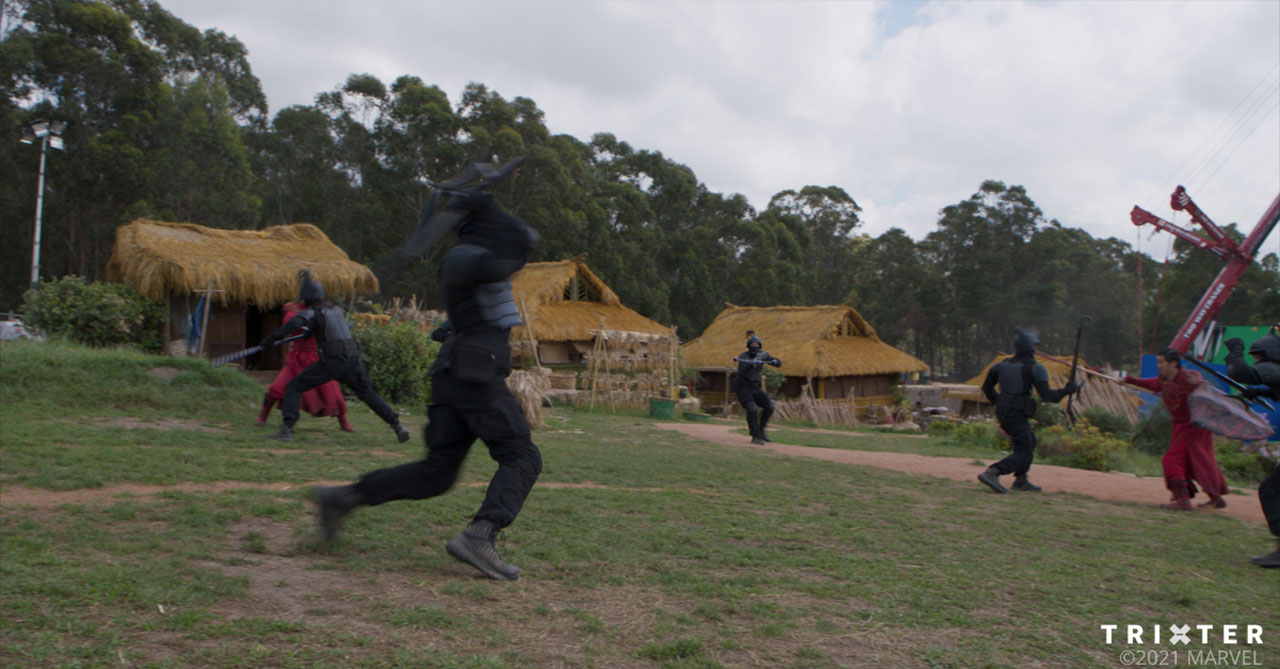
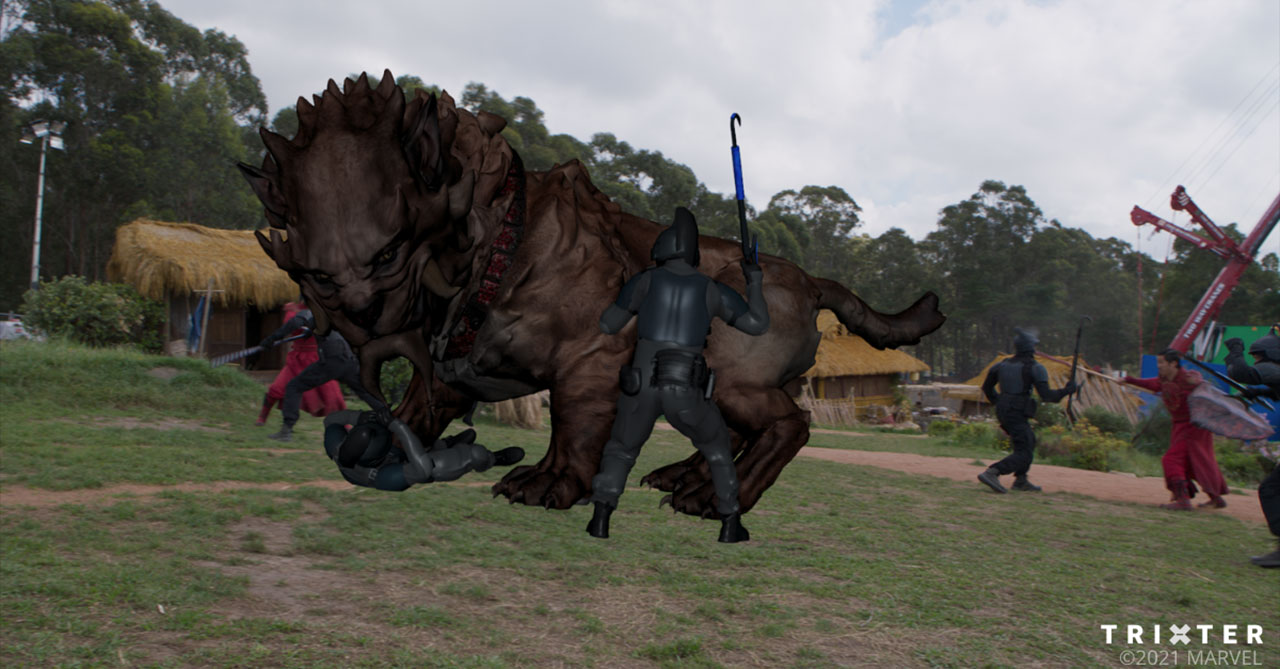
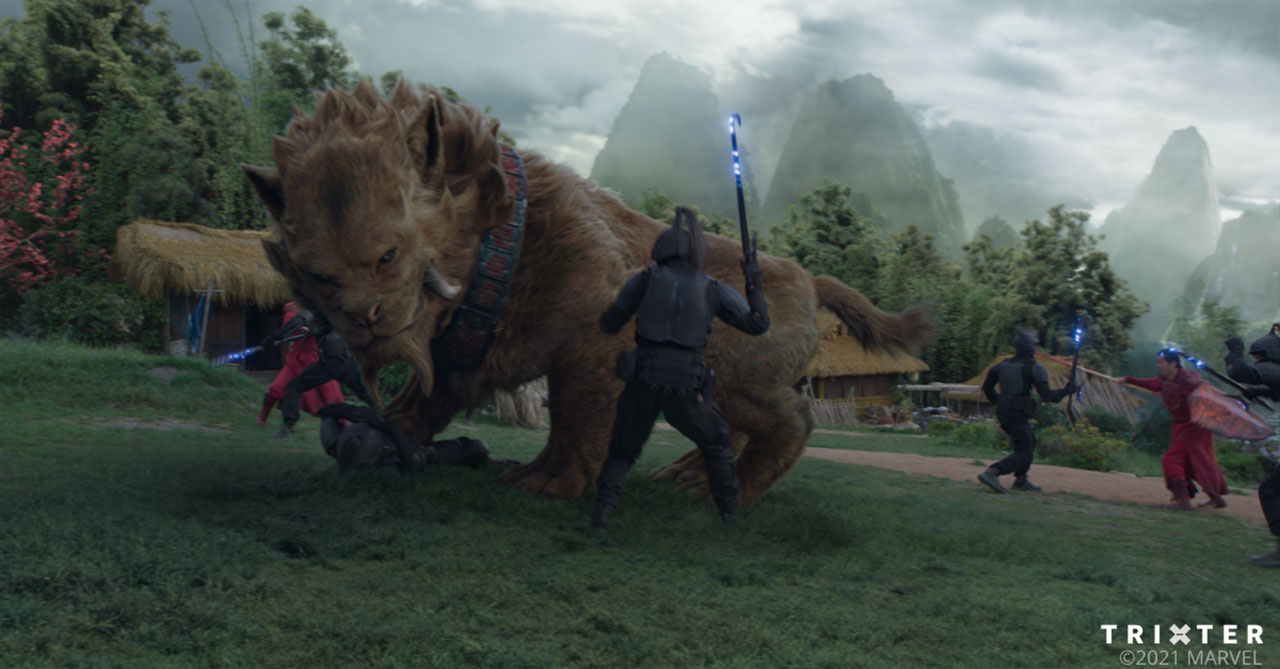
Is there something specific that gives you some really short nights?
On this project pretty much all shots had the potential to steal your sleep. I think the shot with heavy Morris interaction and the Ancestral Road were on the top of the list, though. The Morris interaction required very good planning and quality control throughout all departments. As we wouldn’t replace any limb that contributed to the interaction with Morris, Rotomation Lead Veronica Granadero Estrada and her team needed to create a very exact virtual representation of the real performance of the actors. The creature sims needed to be spot on and in comp, under the skillful leadership of our Lead Tony Lyons, everything needed to be seamlessly integrated considering every tiny detail. This is another example of a task that lives and dies with small details and I am very proud of what the team achieved here.
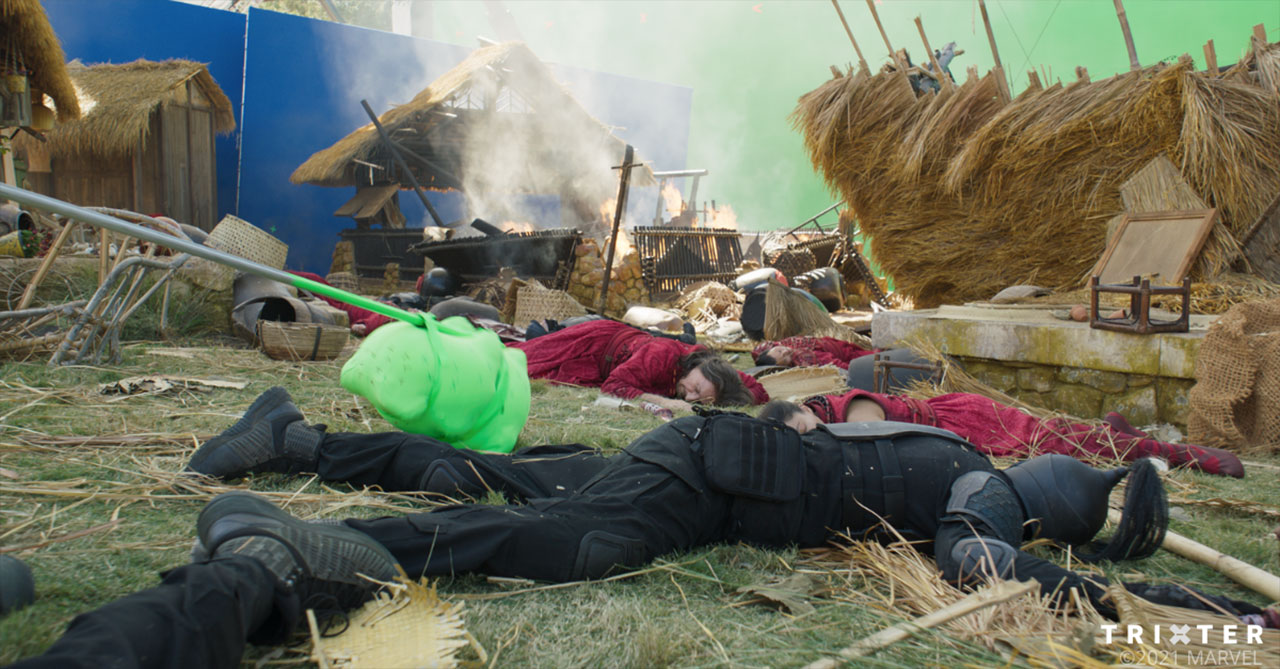
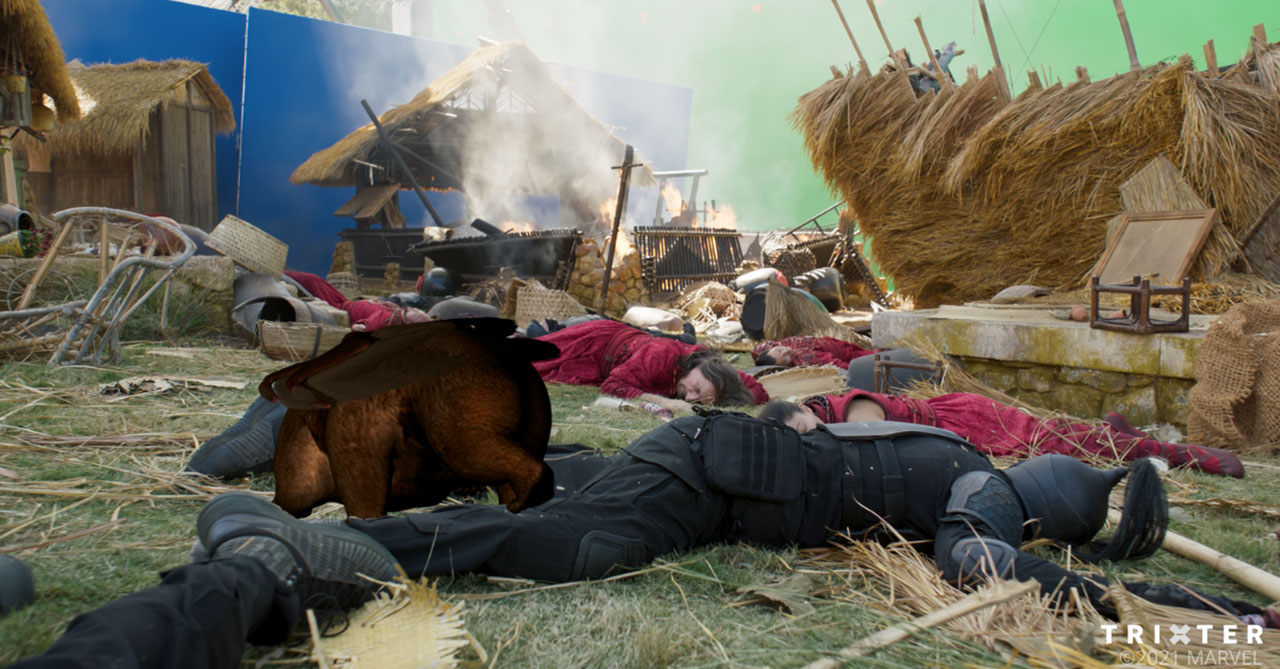
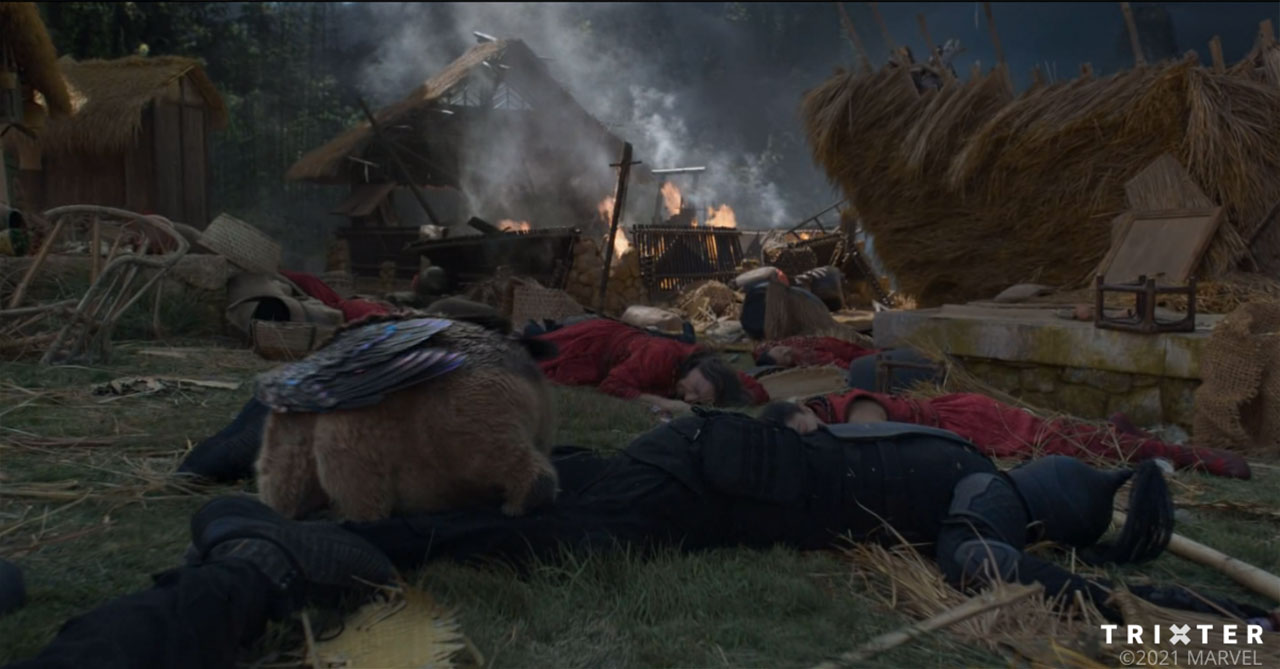
What is your favorite shot or sequence?
I really love the atmosphere and the gritty, brutal setting of the Abomination Fight sequence and in contrast the magical soothing beauty of the Ancestral Road.
What is your best memory on this show?
I think I mentioned it in previous interviews, but again the Trixter Team was amazing. Some of us worked close to 2 years on this project, we had Home Office, a Global Pandemic and all the mental challenges that come with it – still our team had an incredible spirit, put out amazing work and we still had a lot of fun doing so.
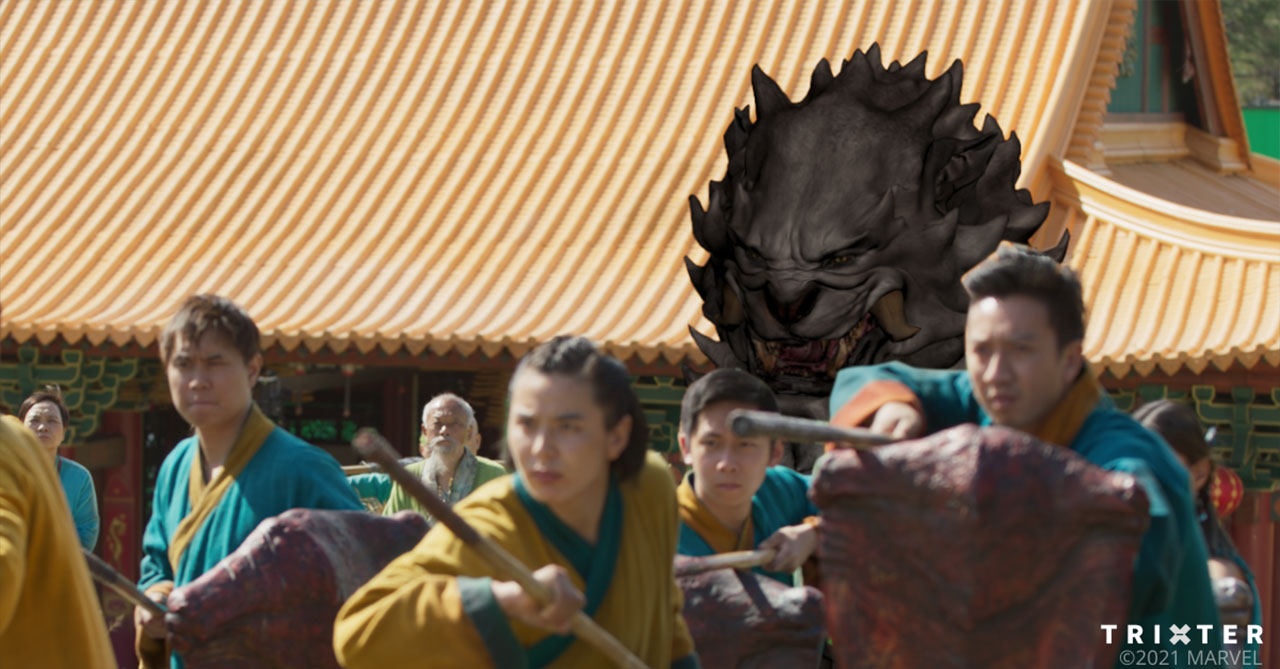
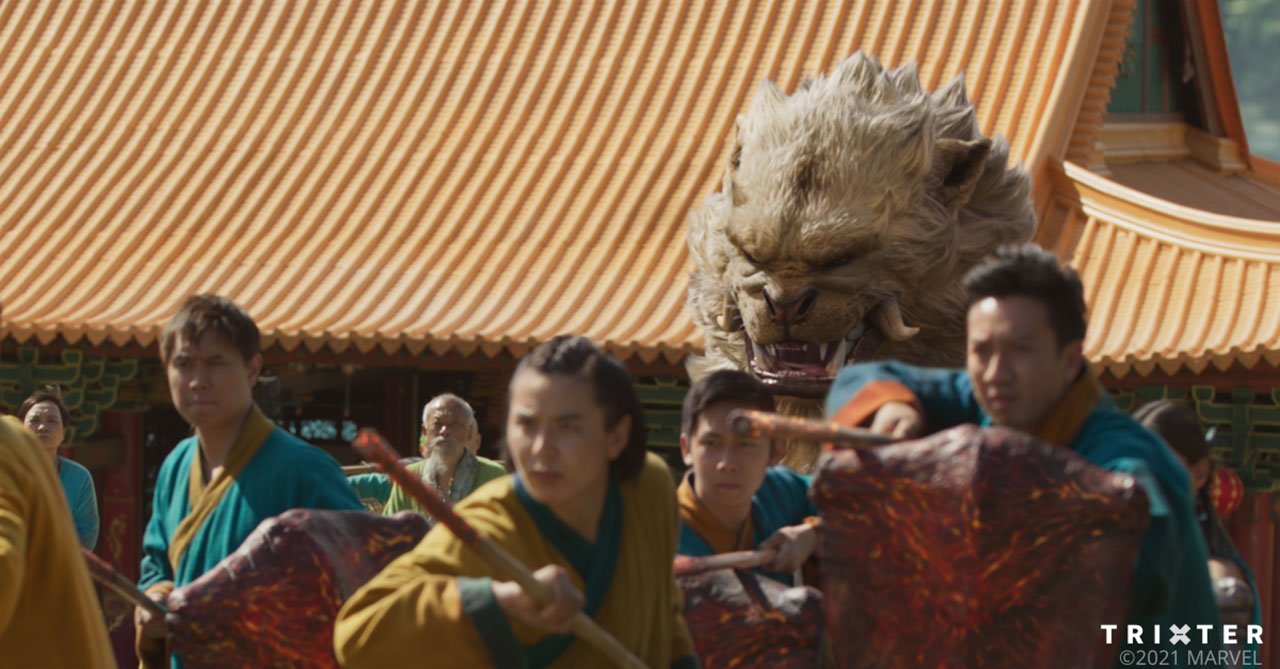
How long have you worked on this show?
I started in October 2019 and finished in Juli 2021. But I was not on the show for about 4 months to focus entirely on Black Widow.
What’s the VFX shots count?
We finaled 237 shots that ended up in the movie, but worked on quite a lot more.
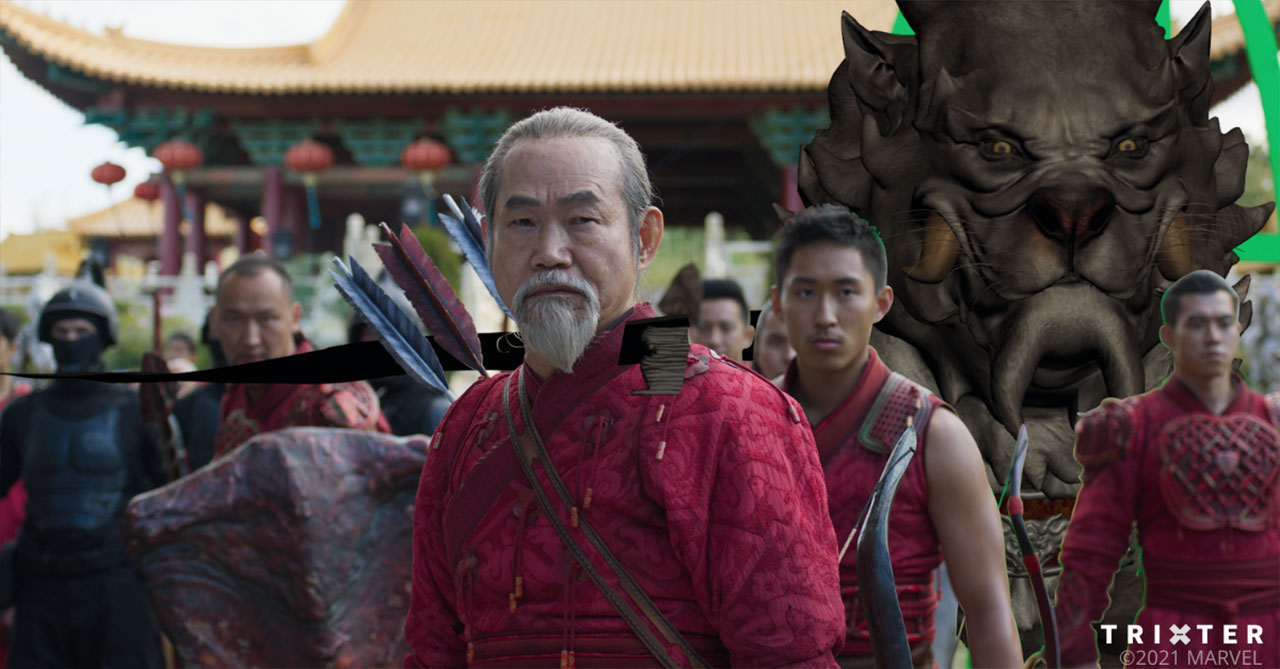
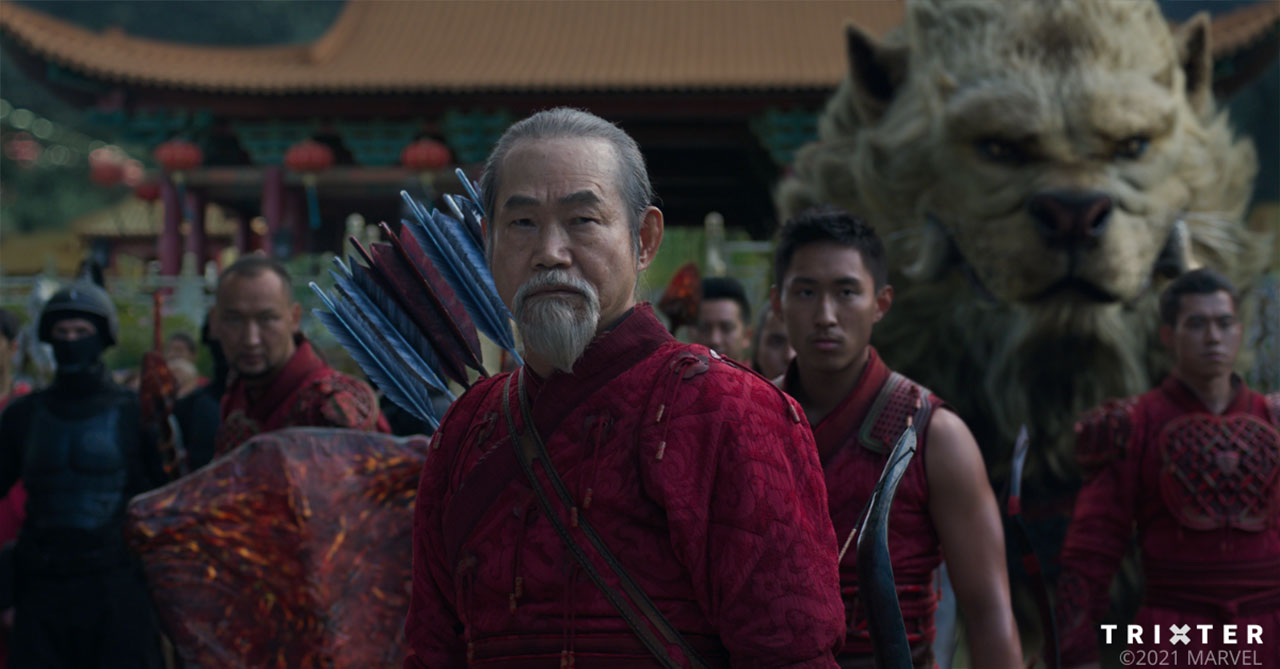
What was the size of your team?
We had roughly 200 people working on the show.
What is your next project?
I can’t disclose this yet, but it looks like it will be super fun. I am very much looking forward to that.
A big thanks for your time.
WANT TO KNOW MORE?
Christopher Townsend: Here is my interview of Overall VFX Supervisor Christopher Townsend about Shang-Chi.
Trixter: Dedicated page about Shang-Chi on Trixter website.
Disney+: You can watch Shang-Chi on Disney+ (starting on November 12).
© Vincent Frei – The Art of VFX – 2021




